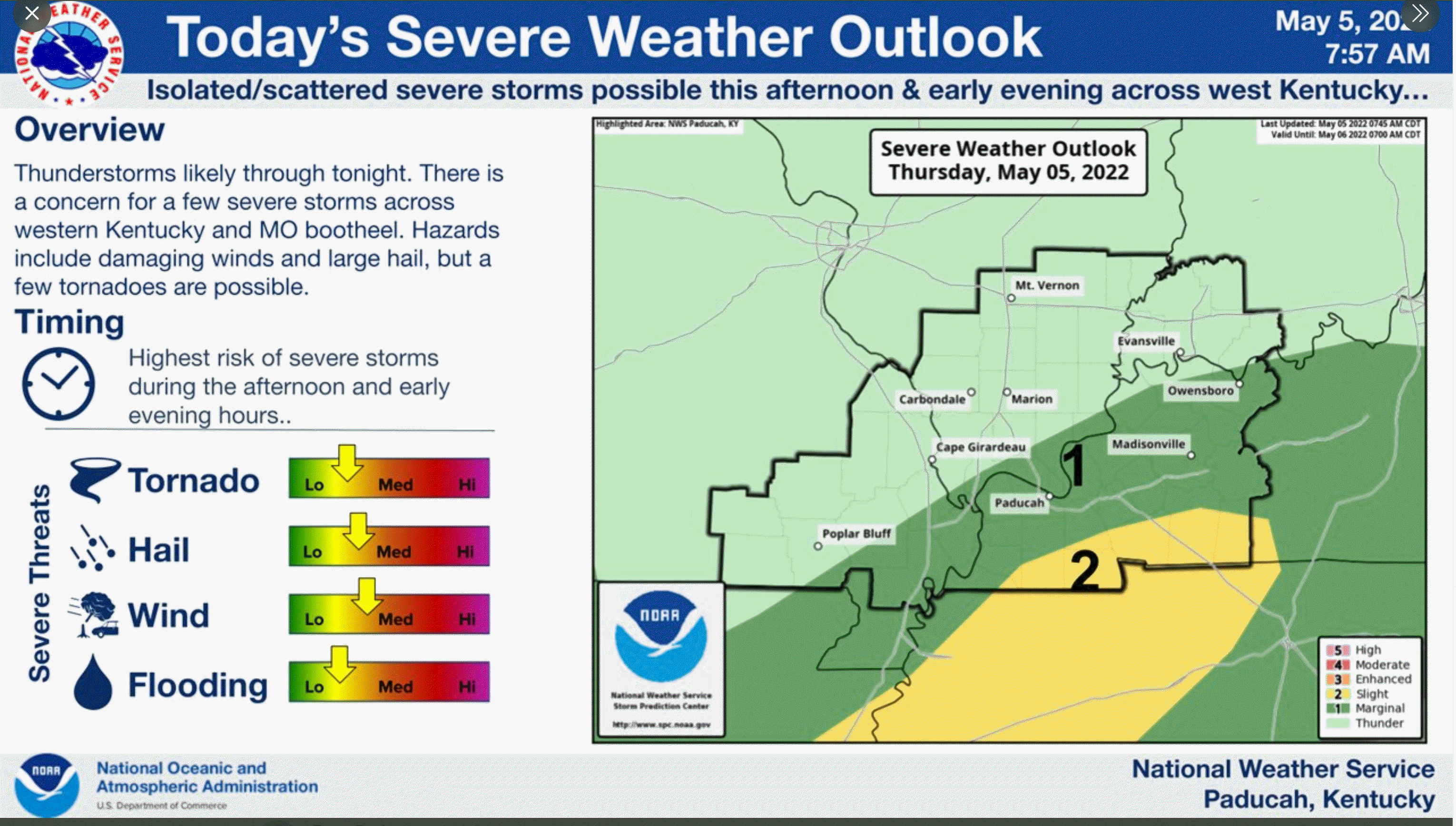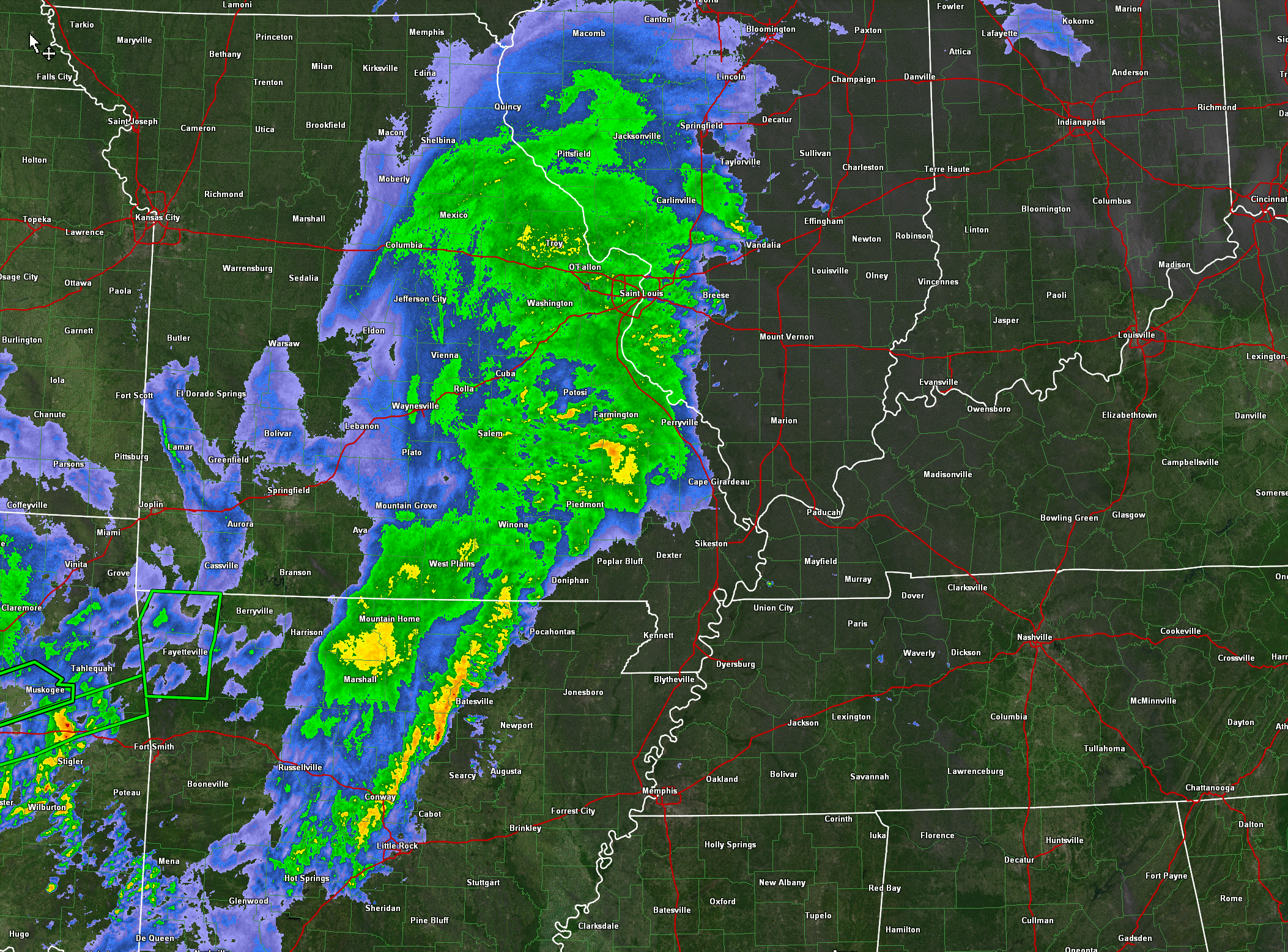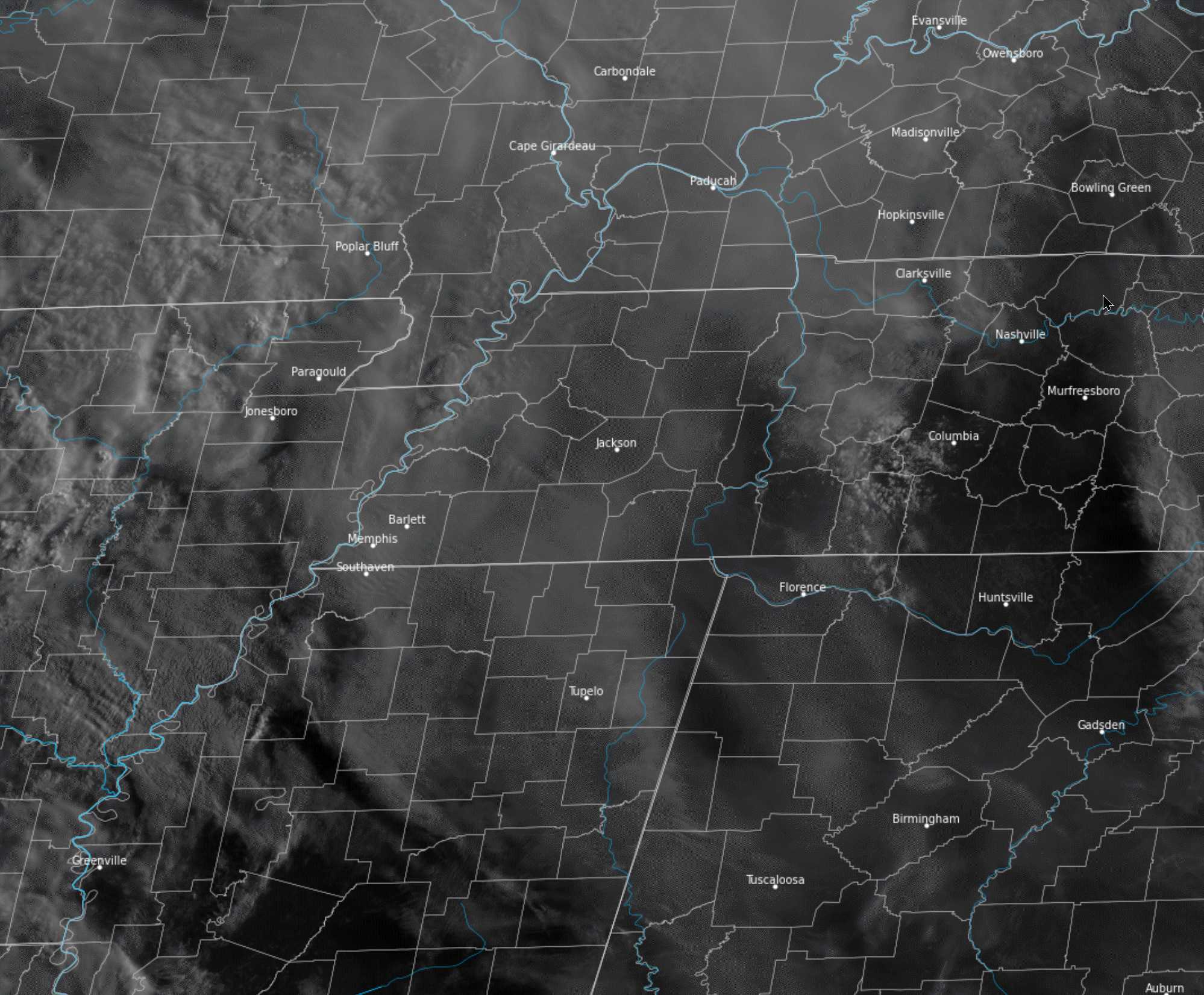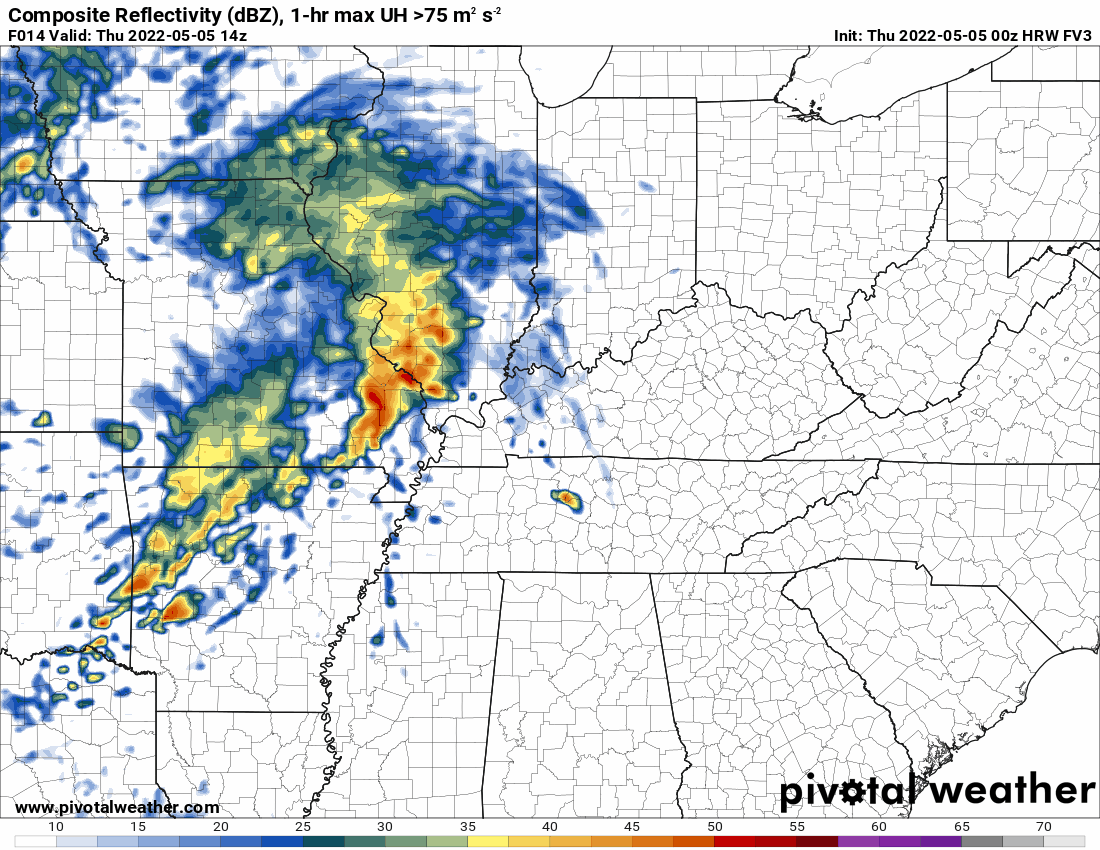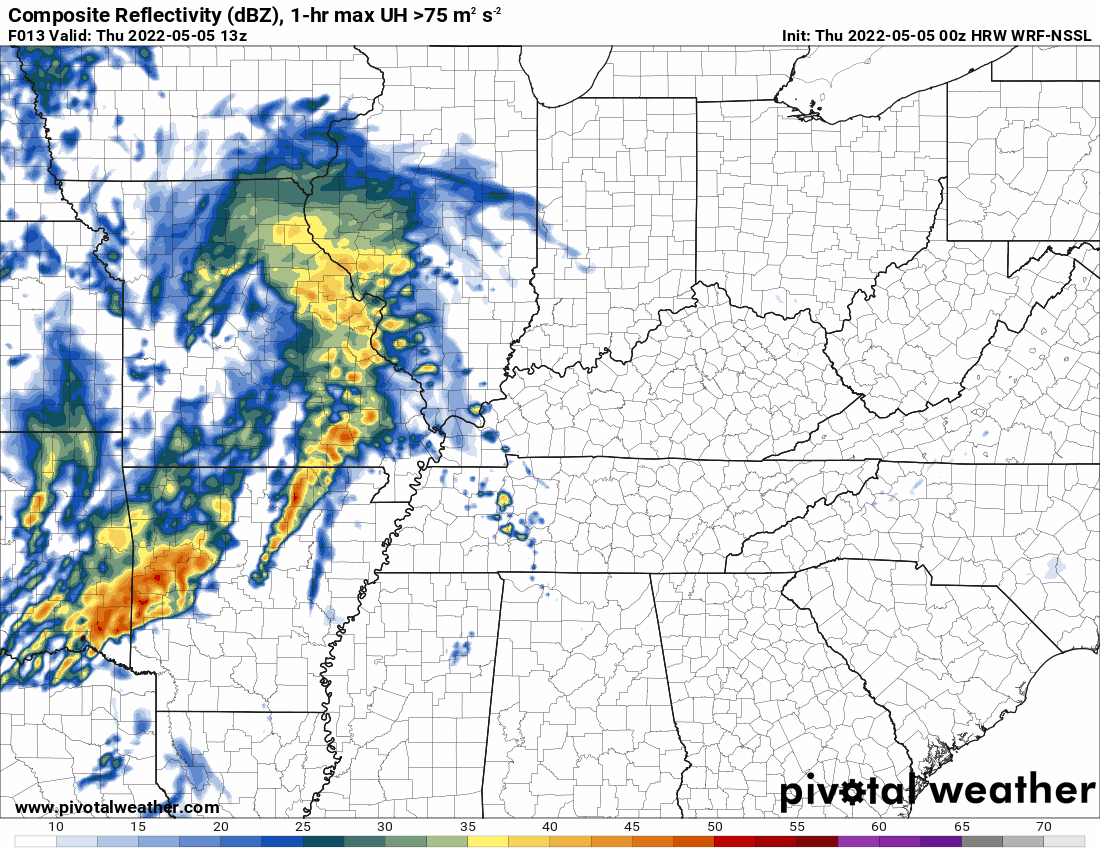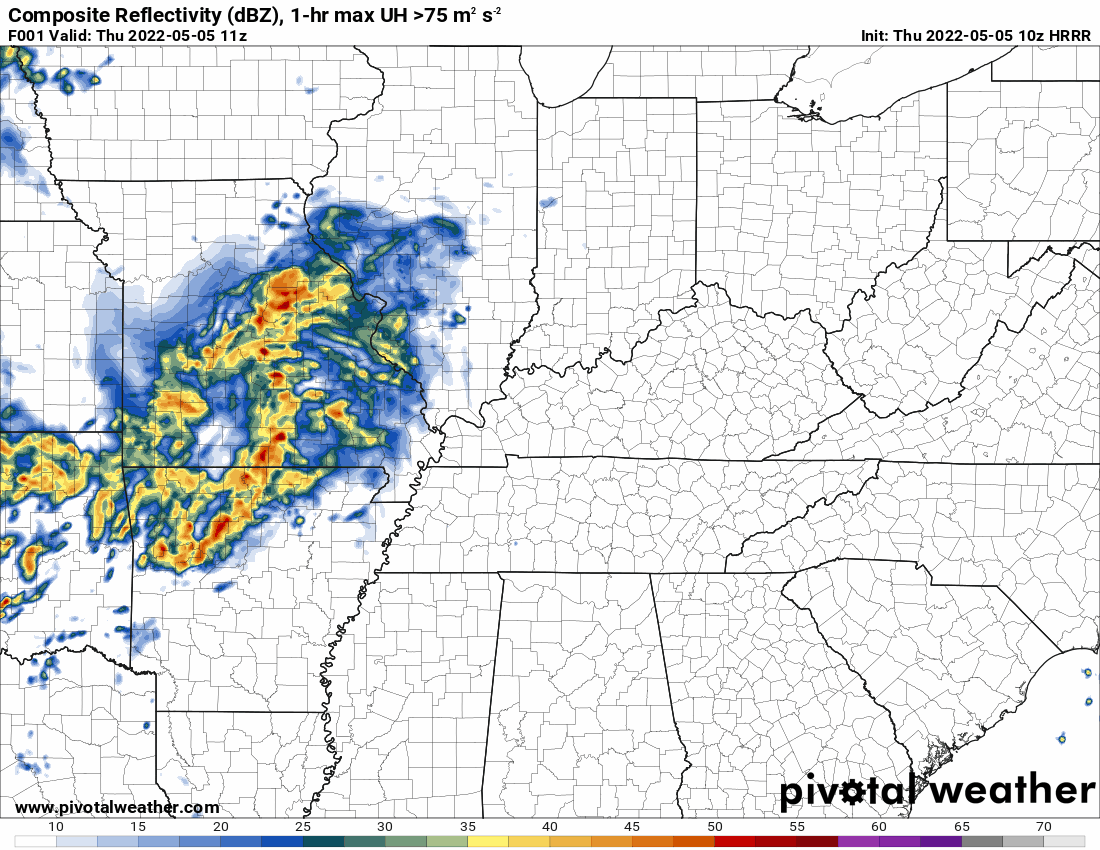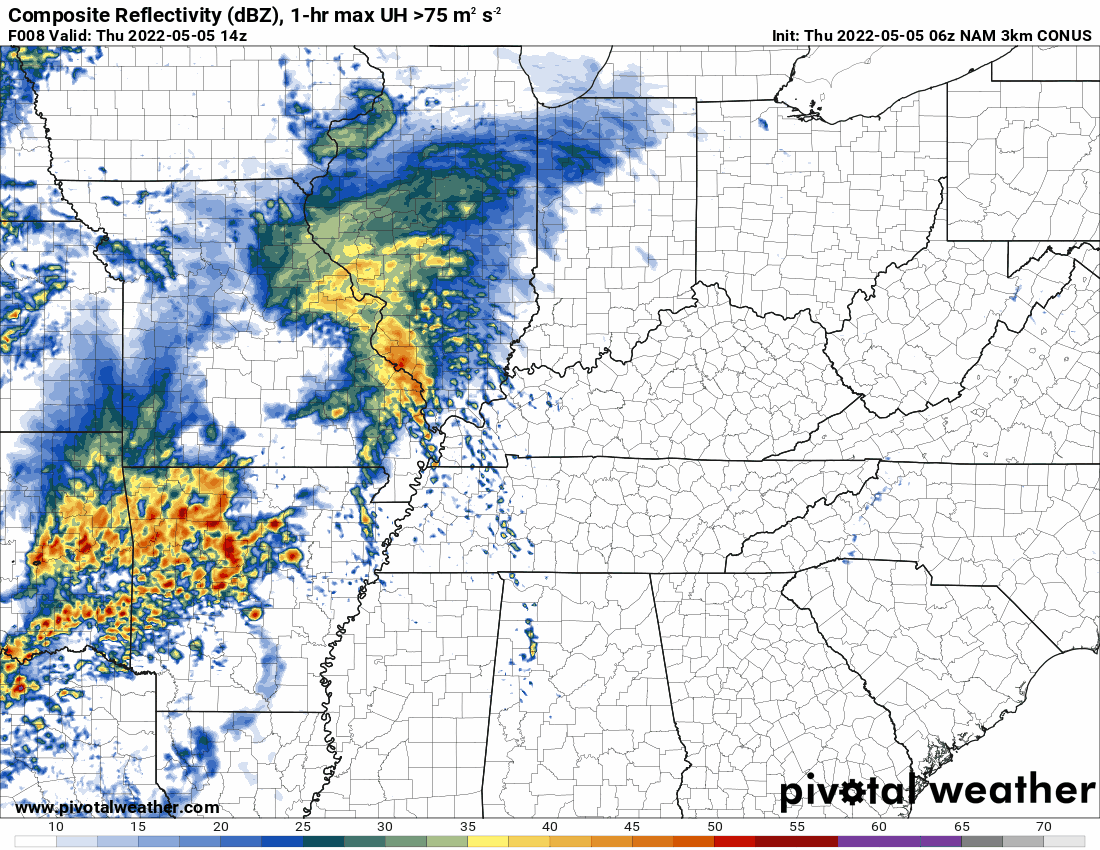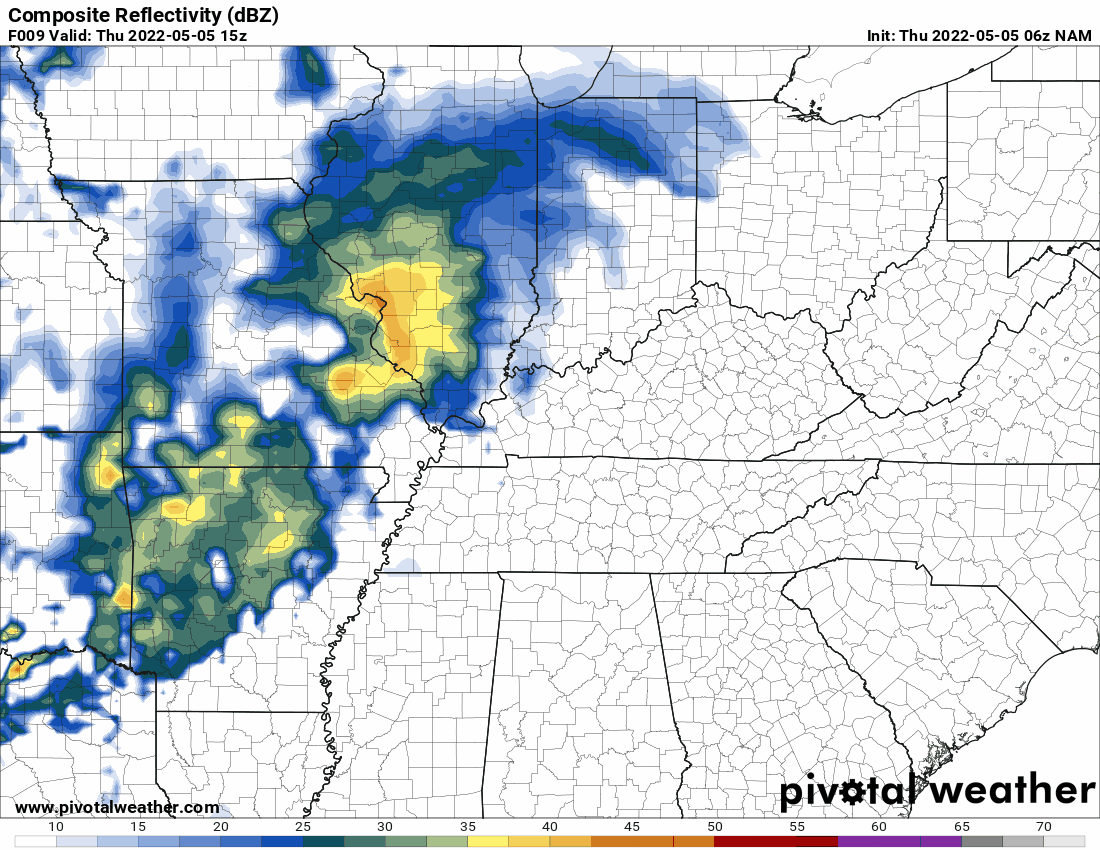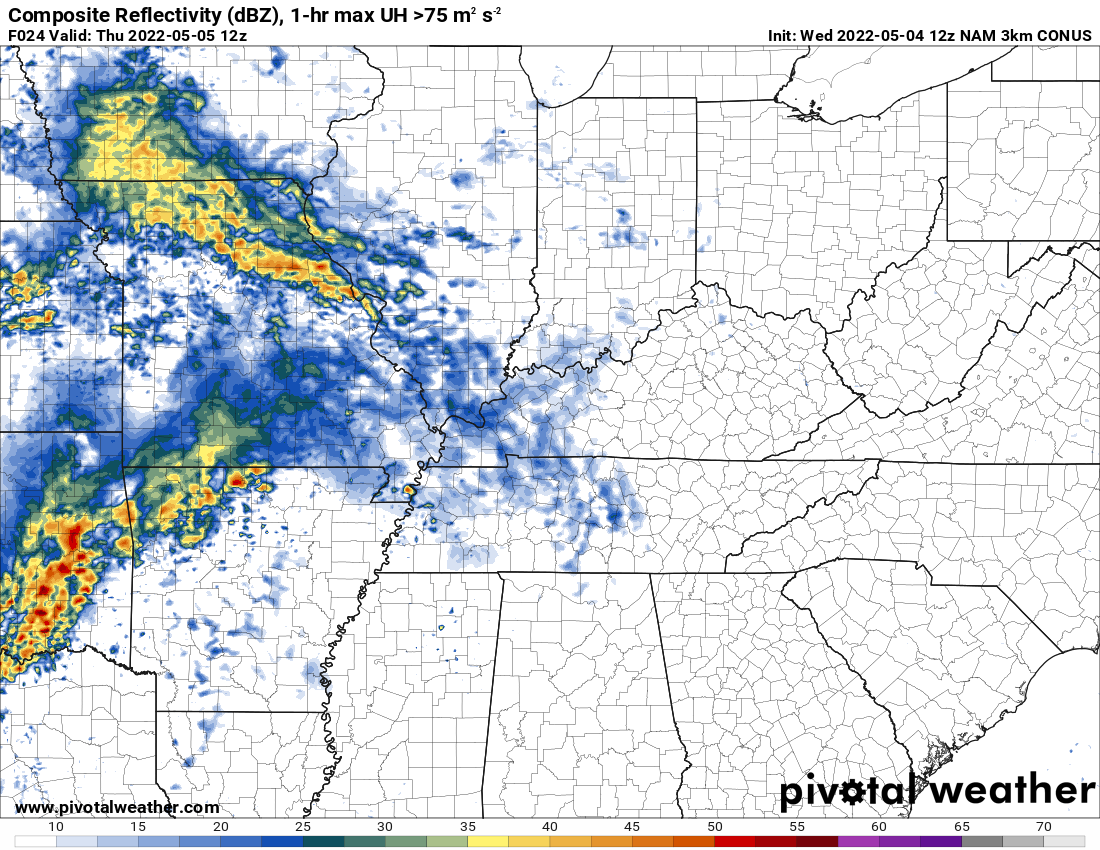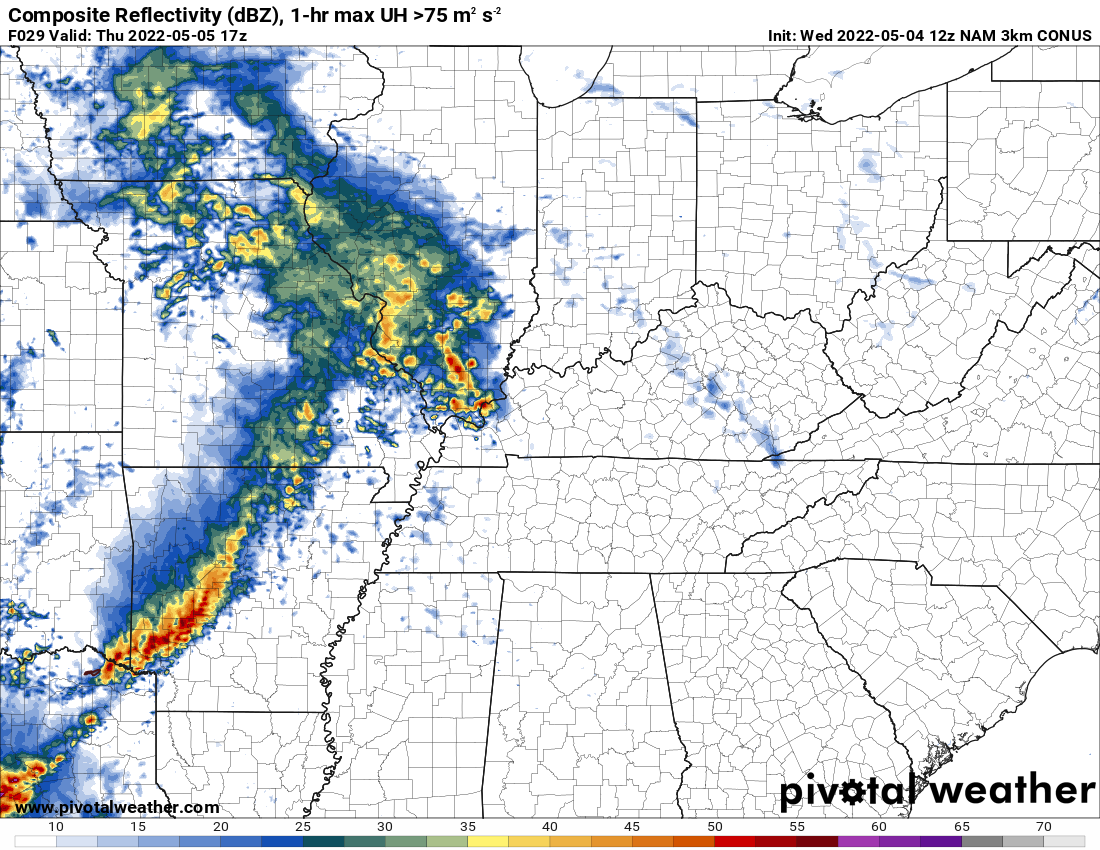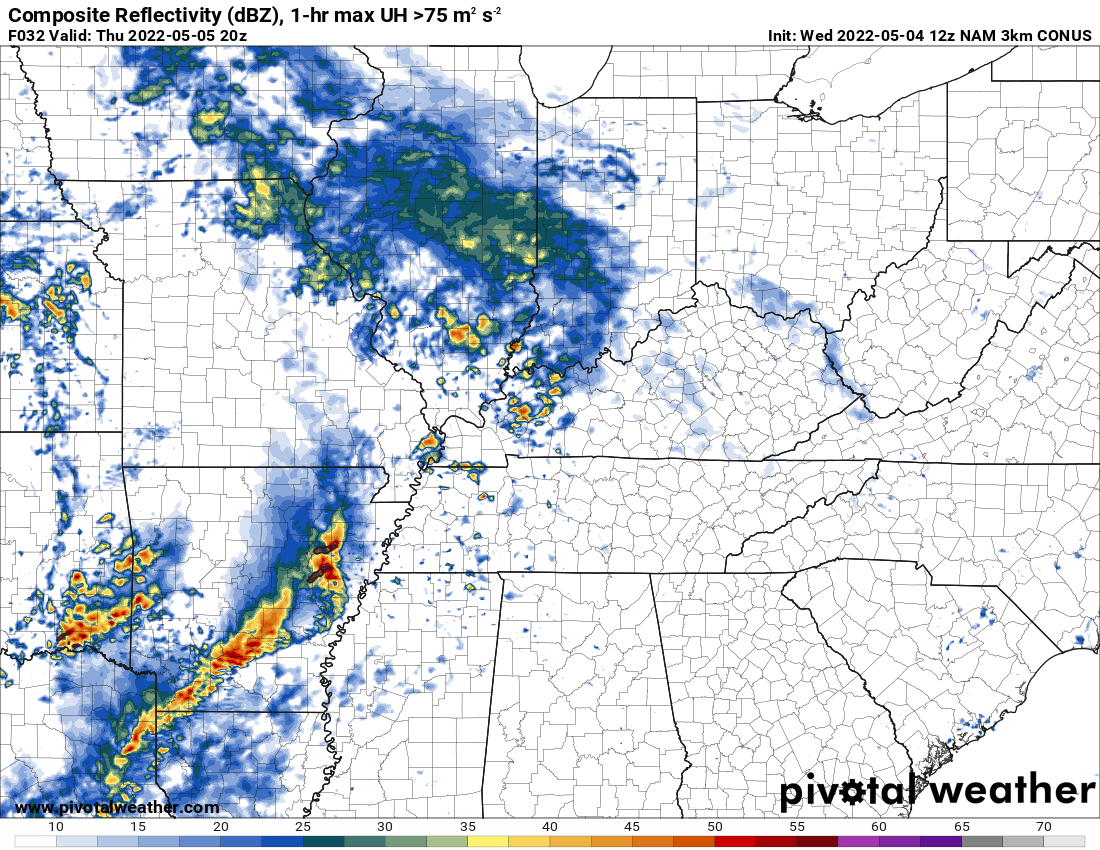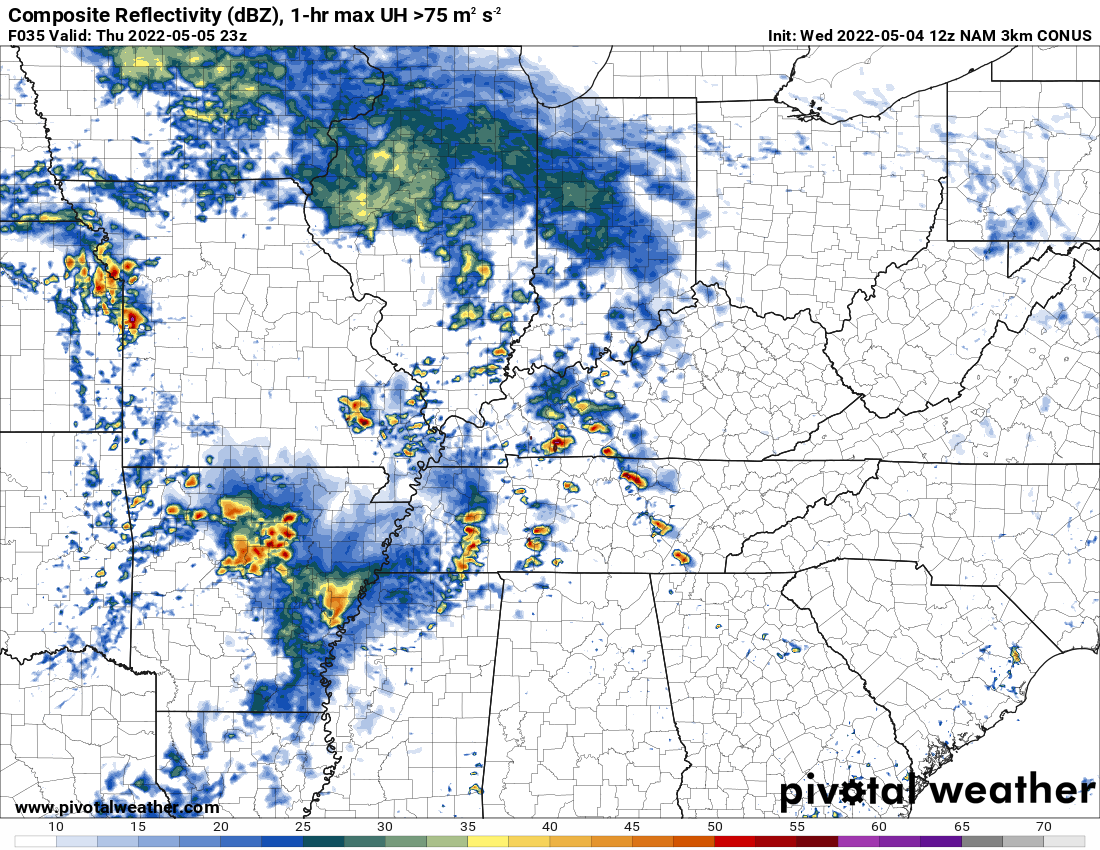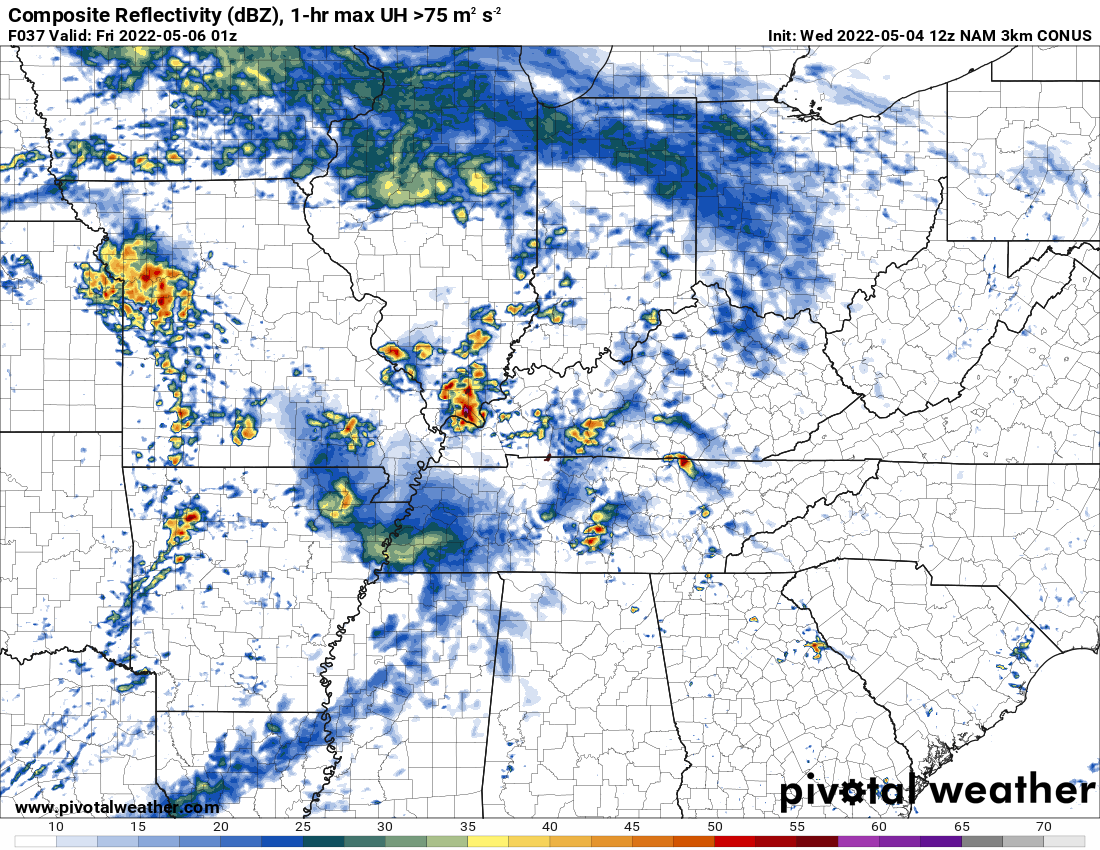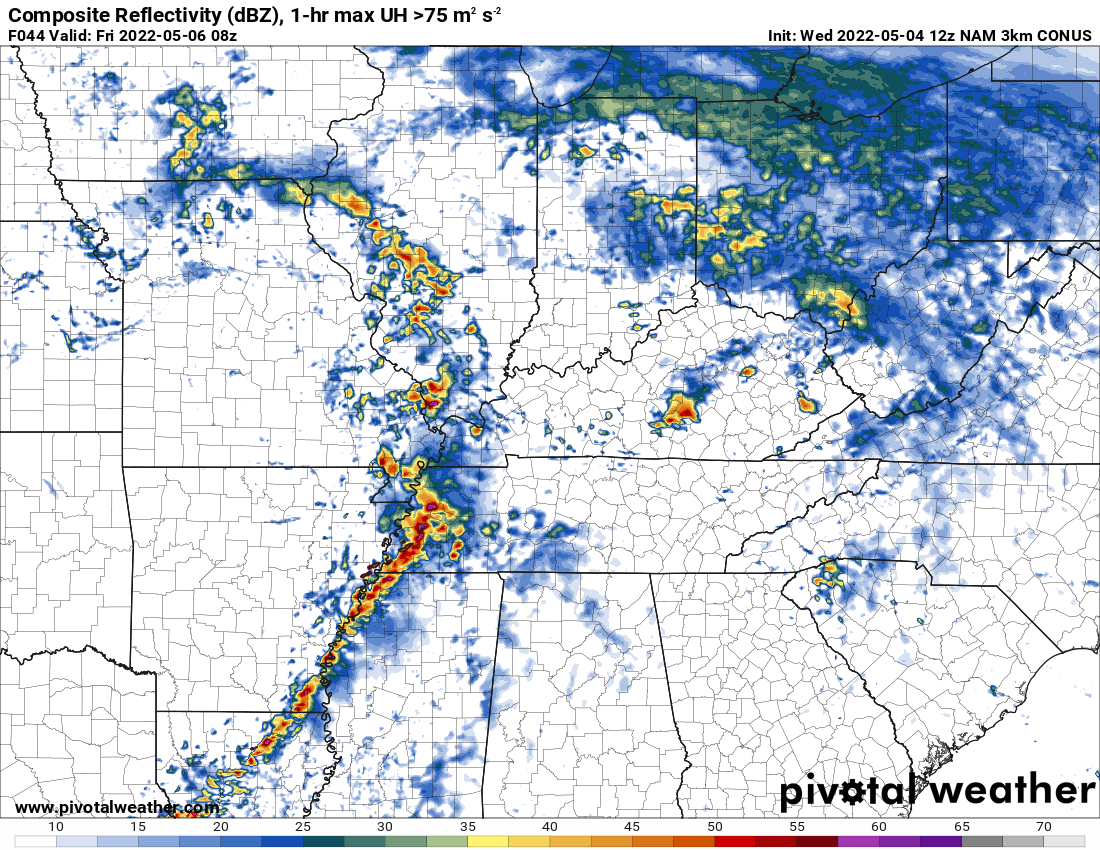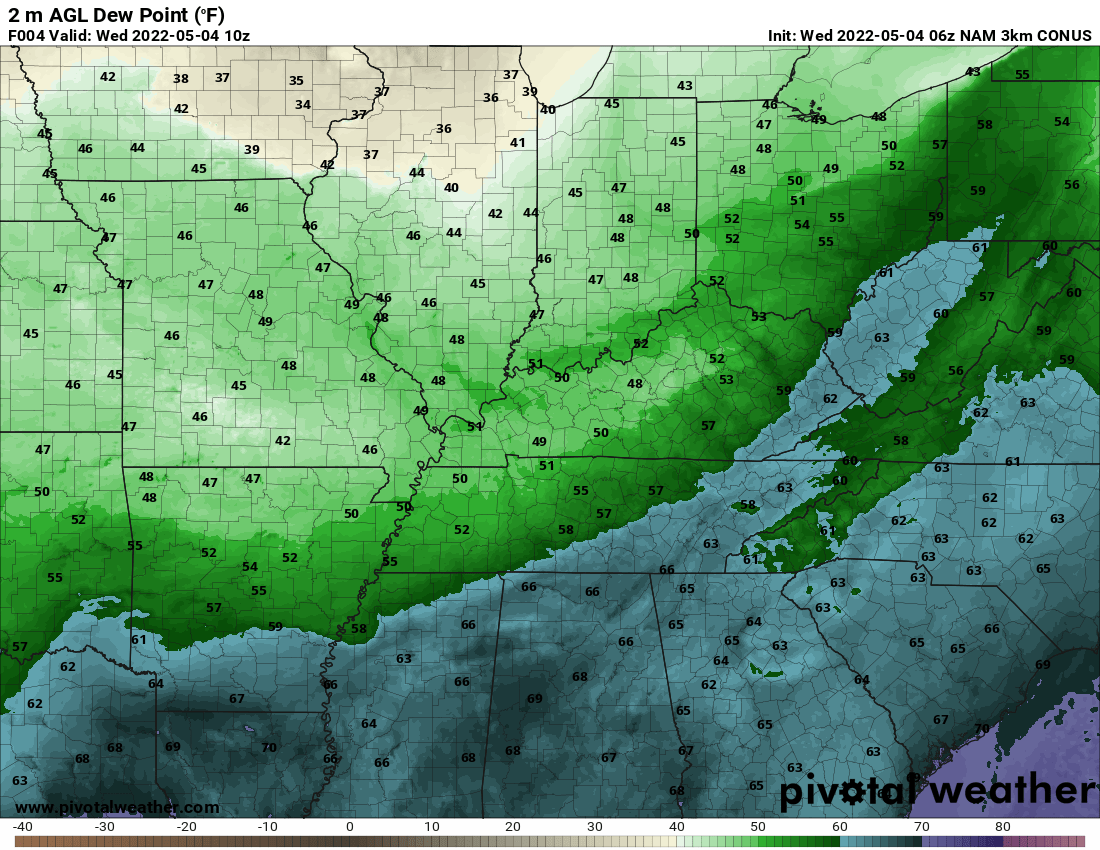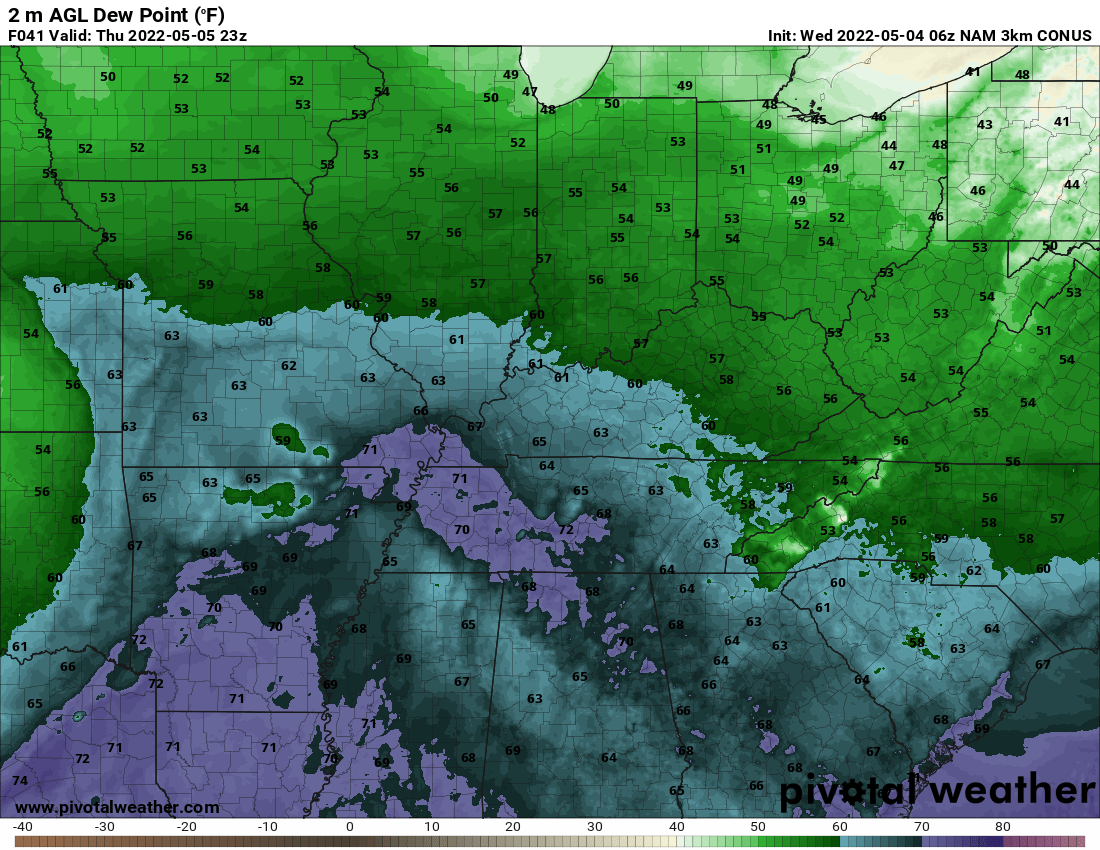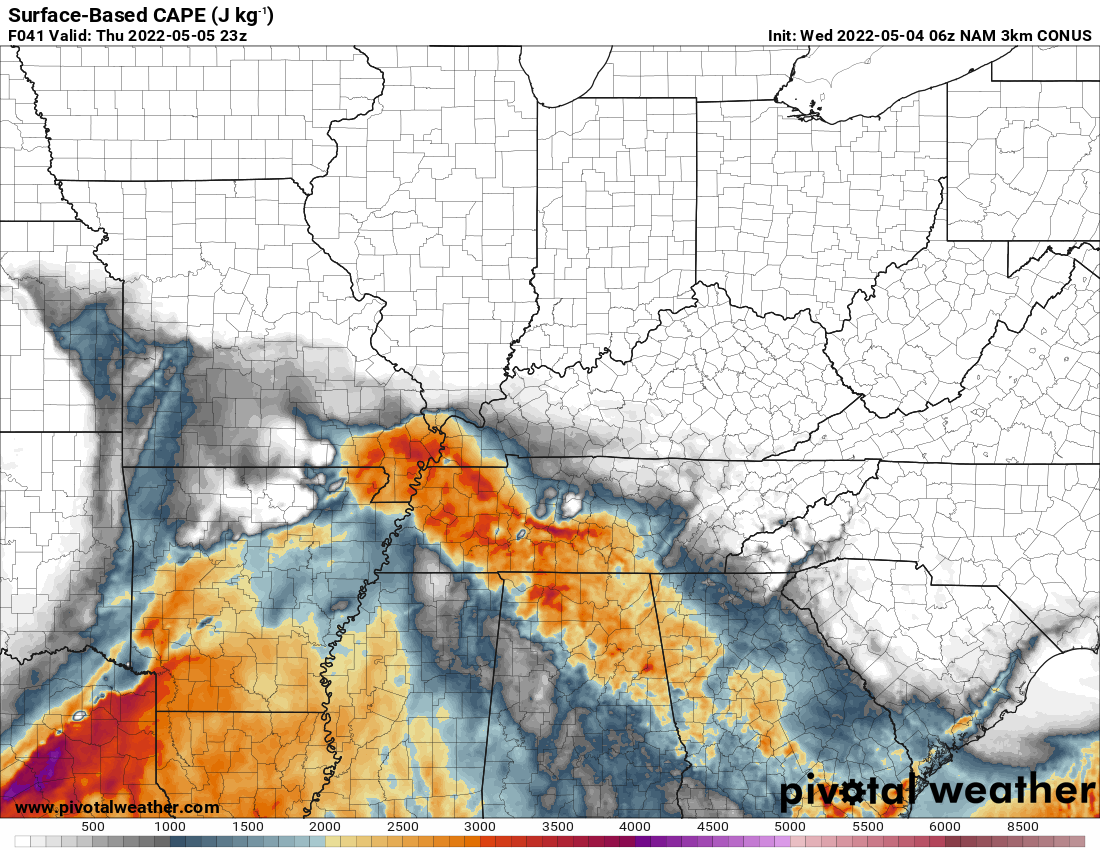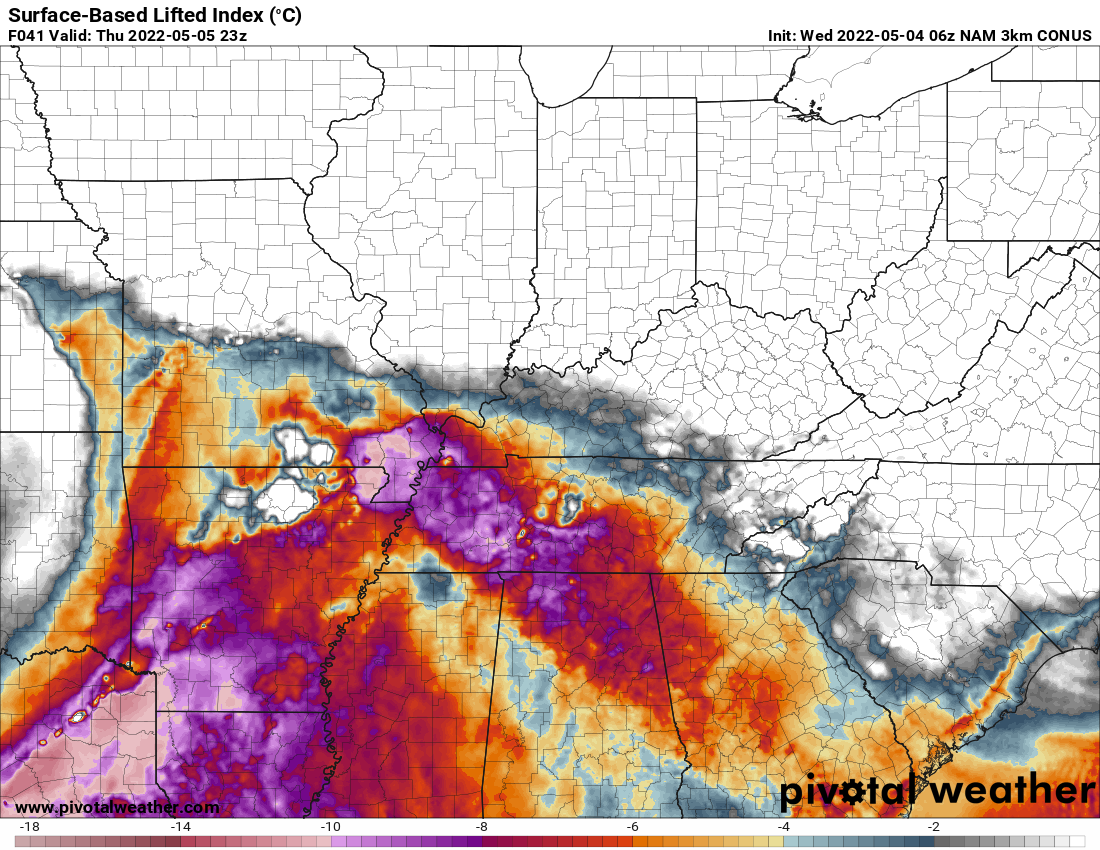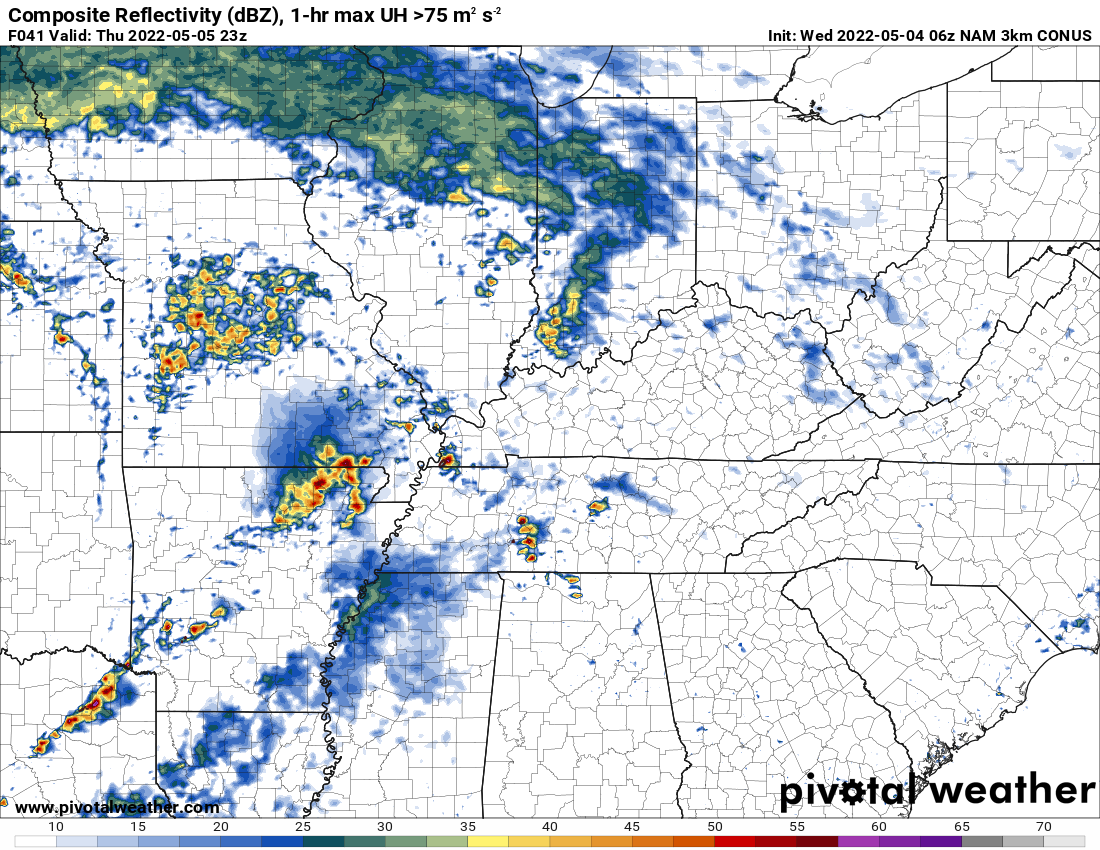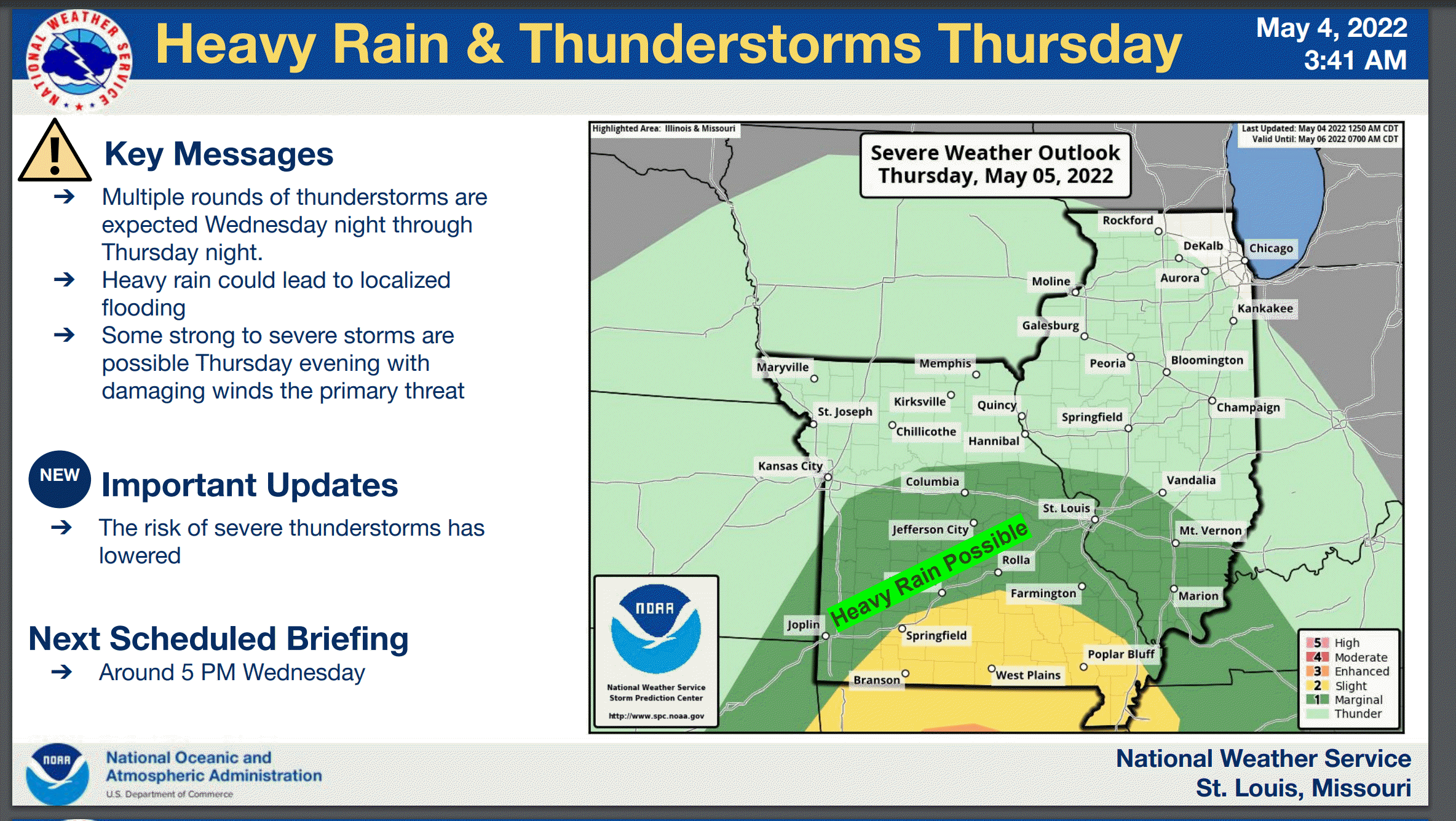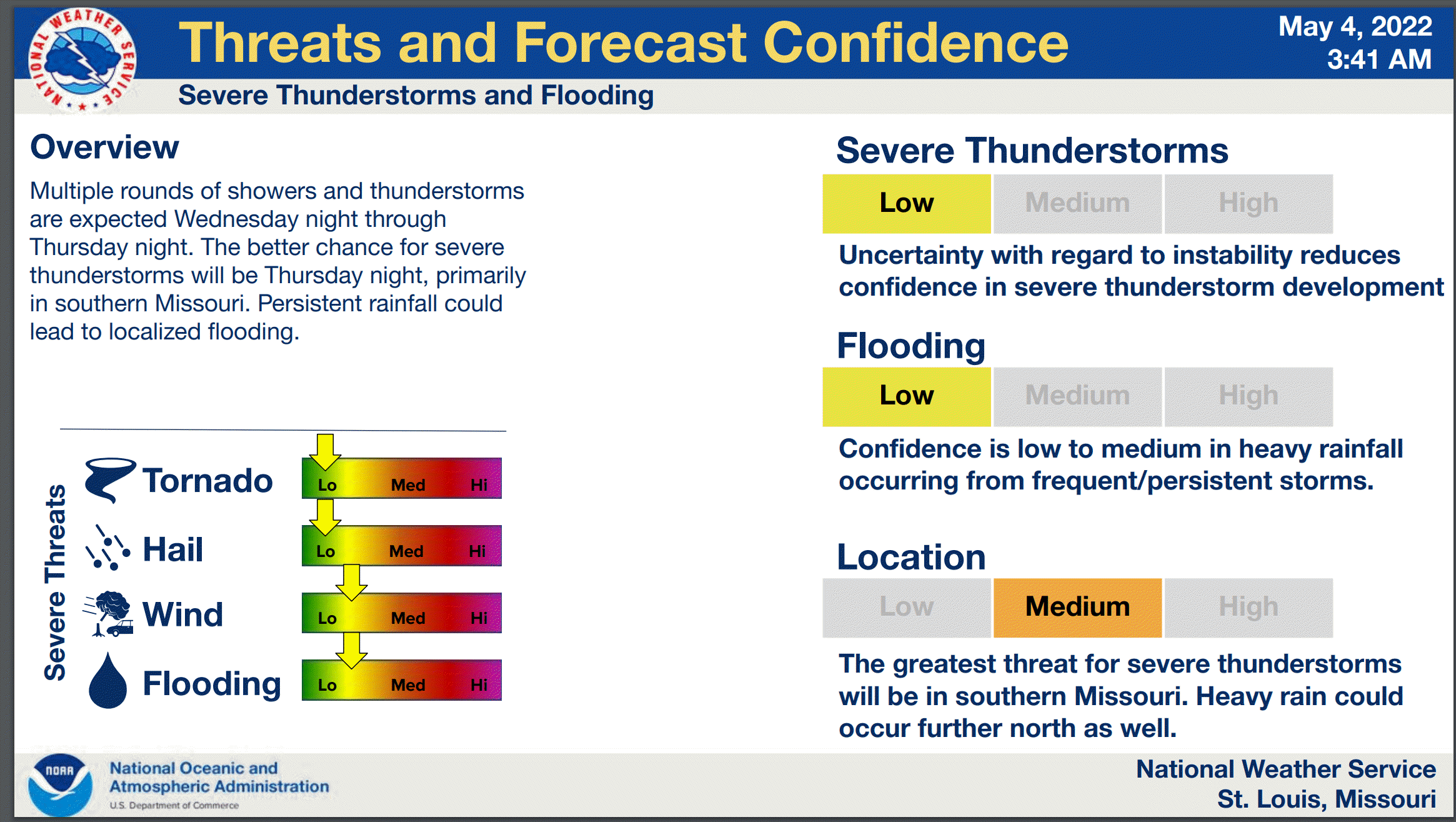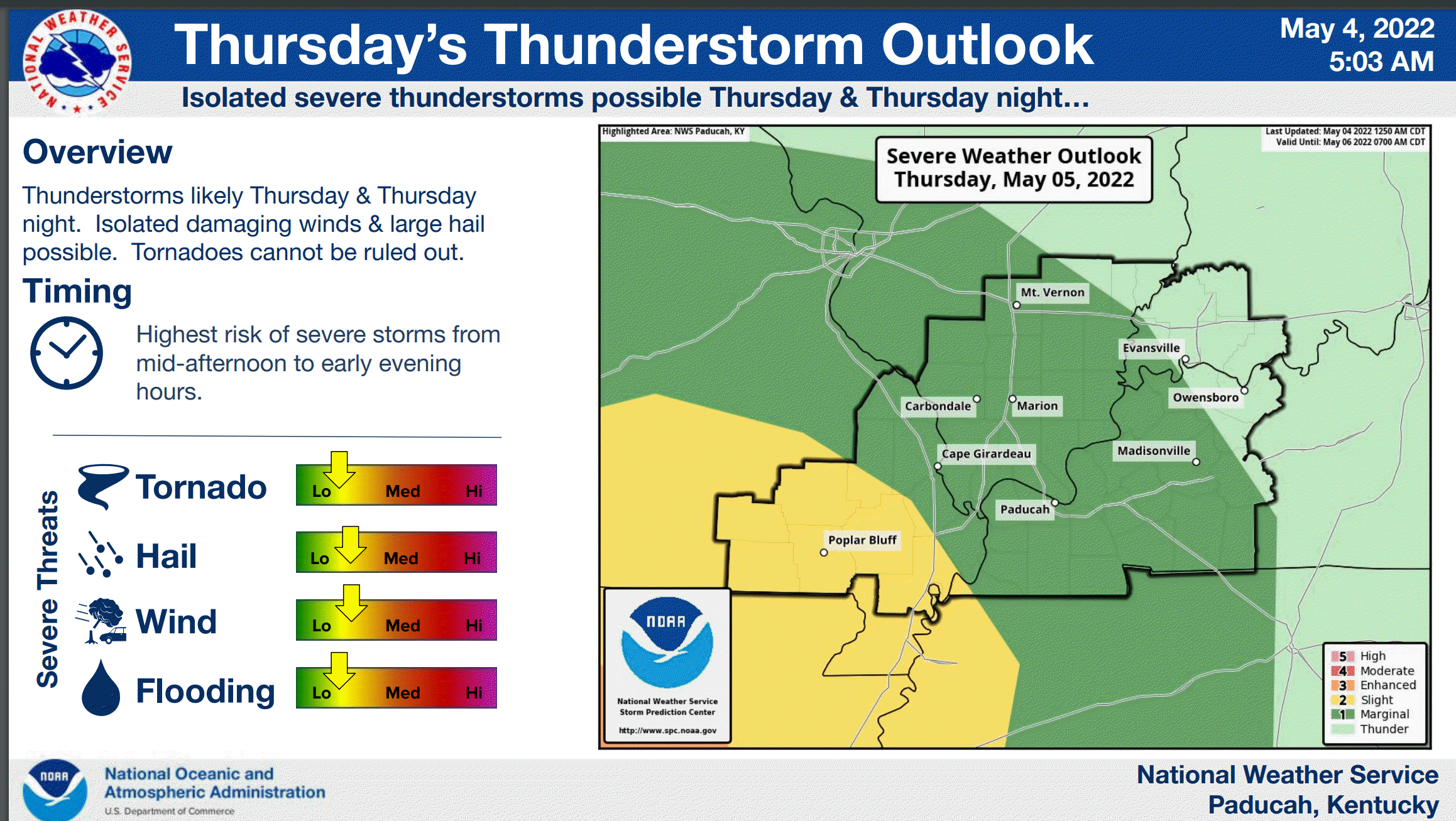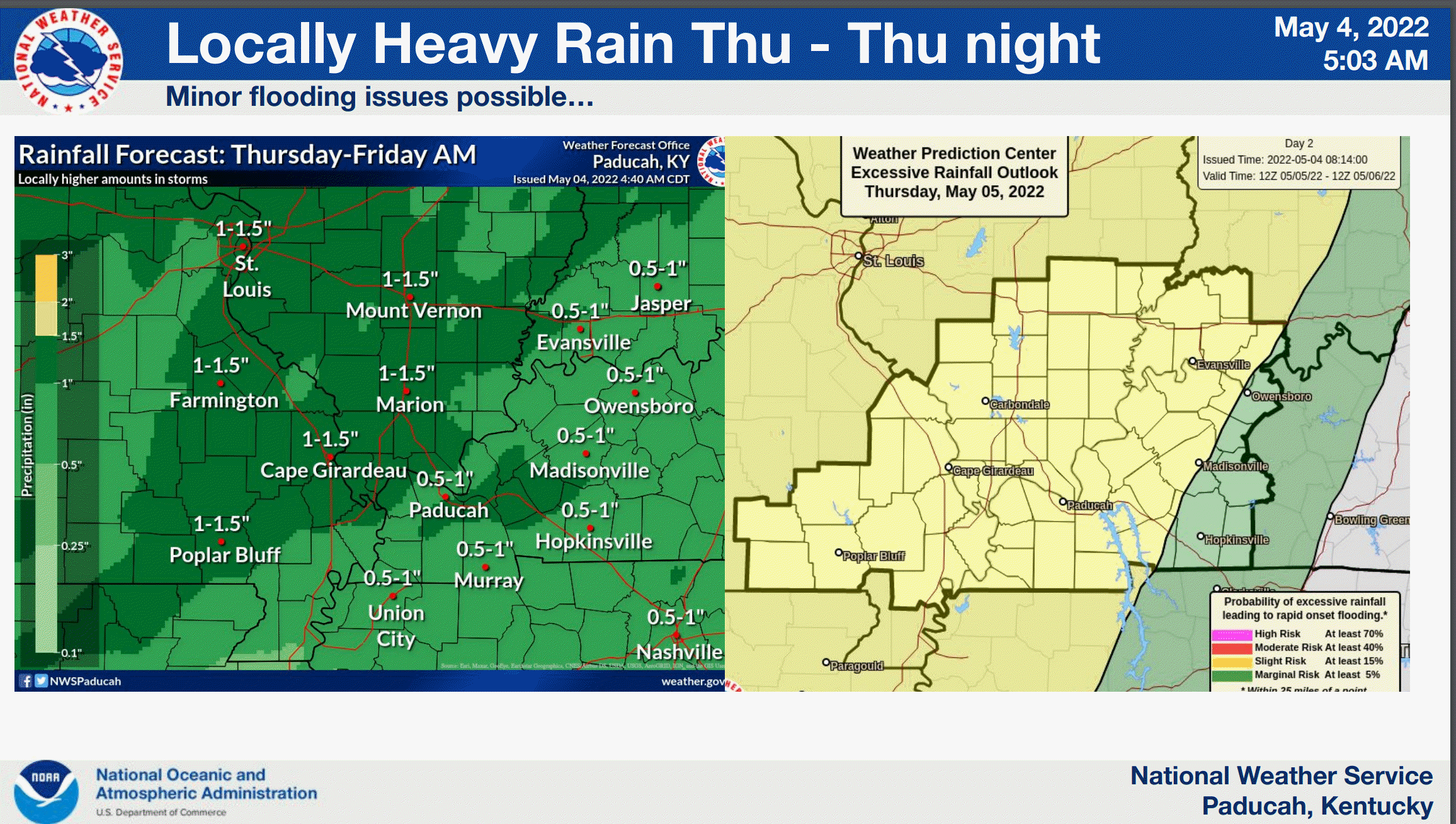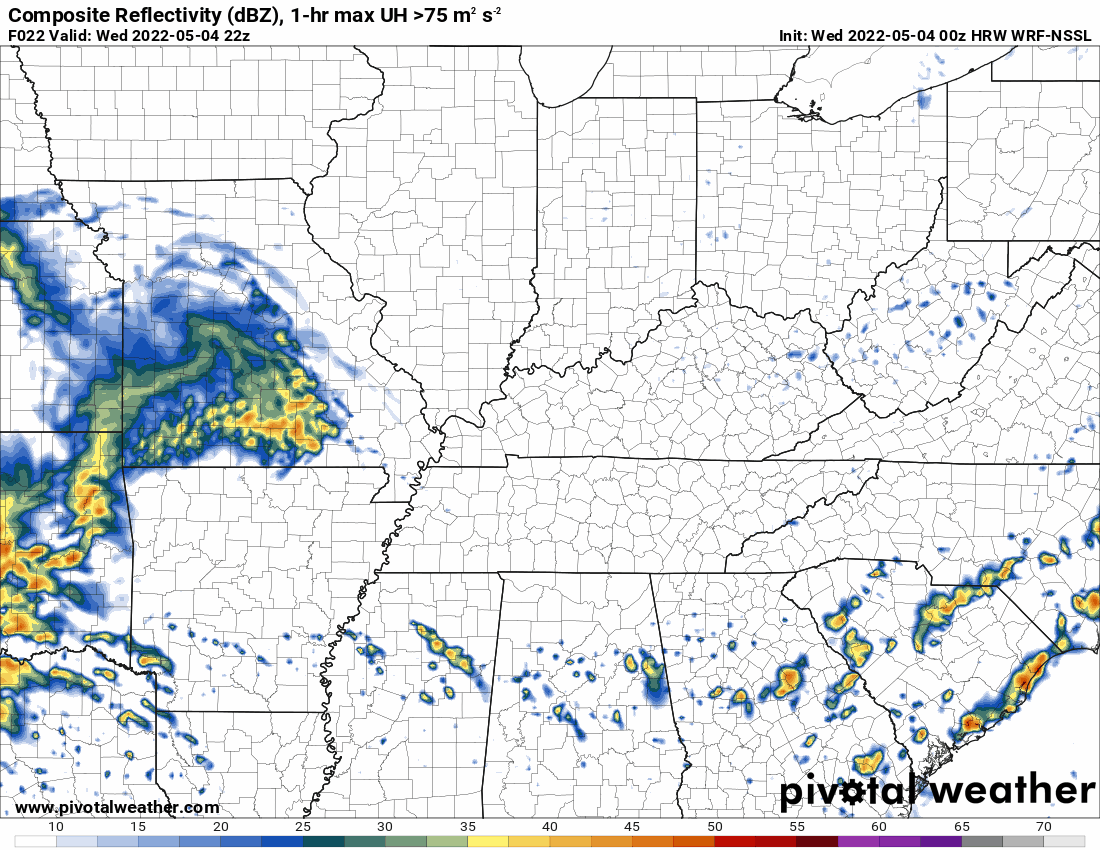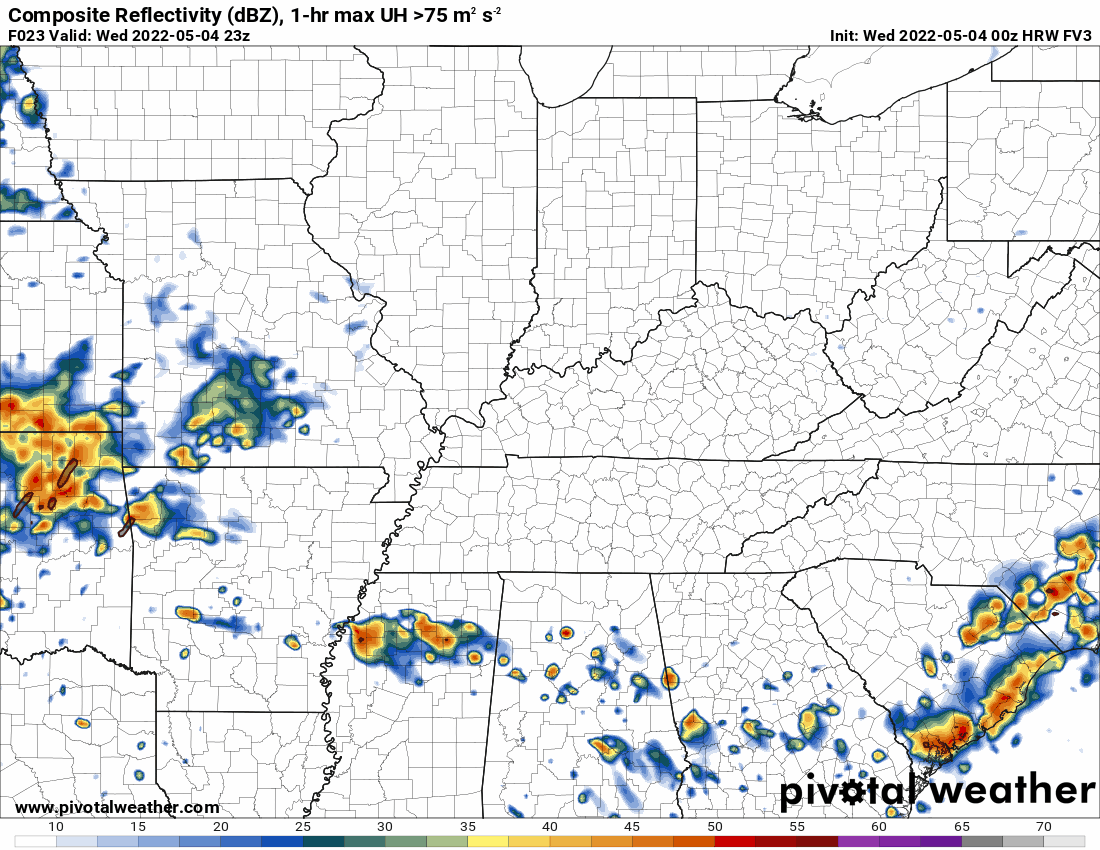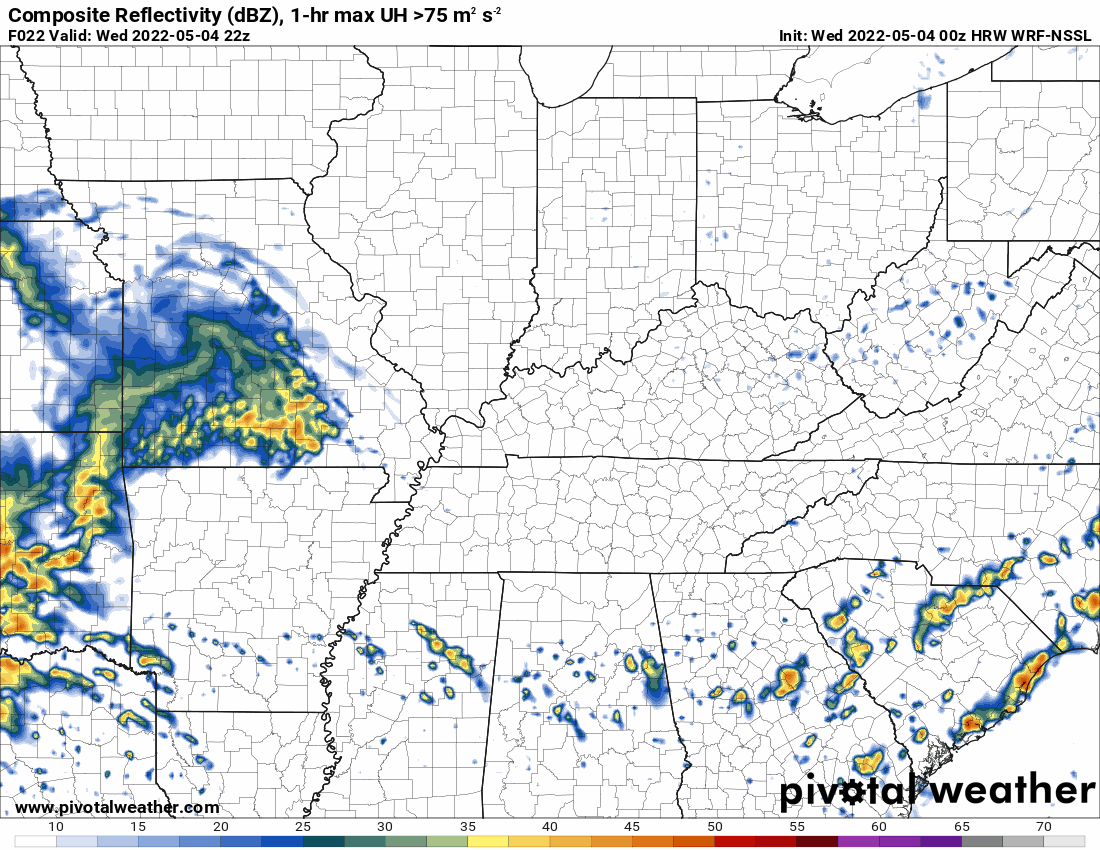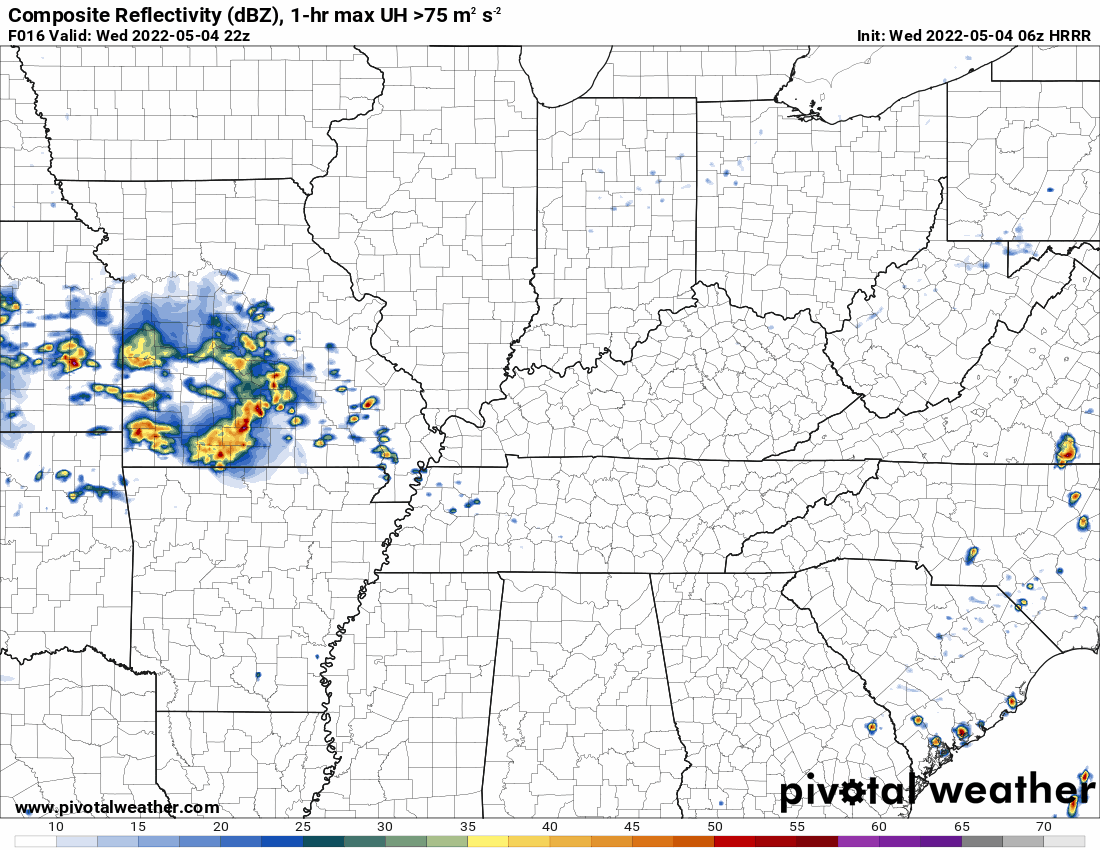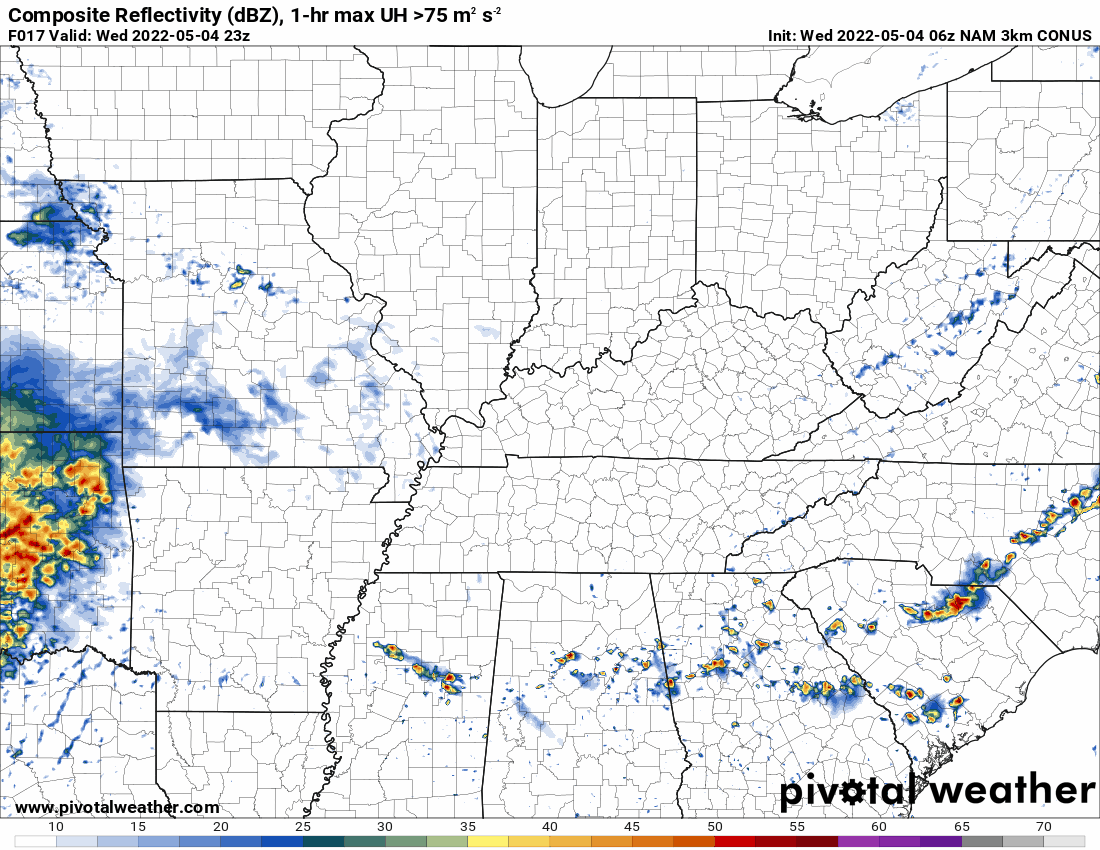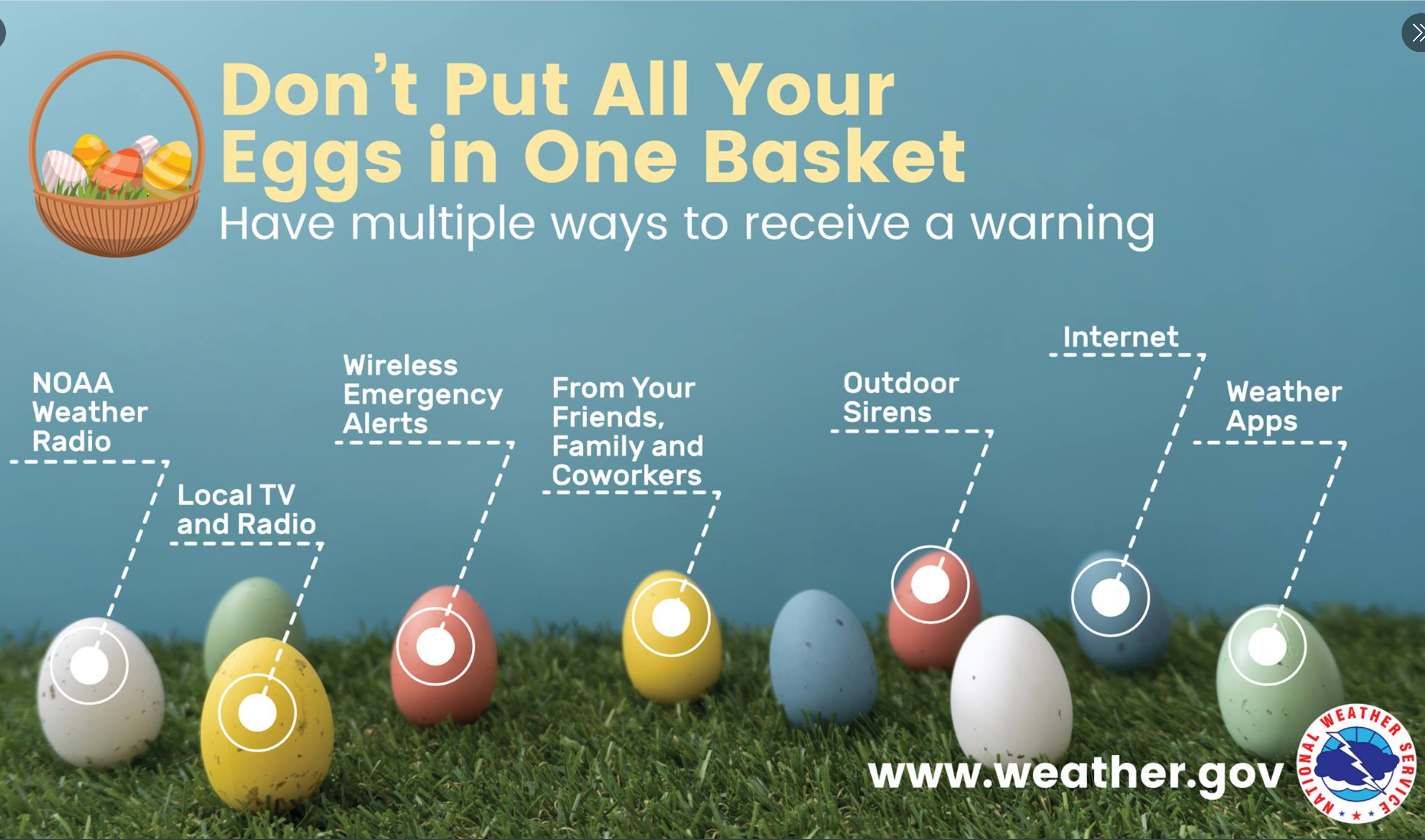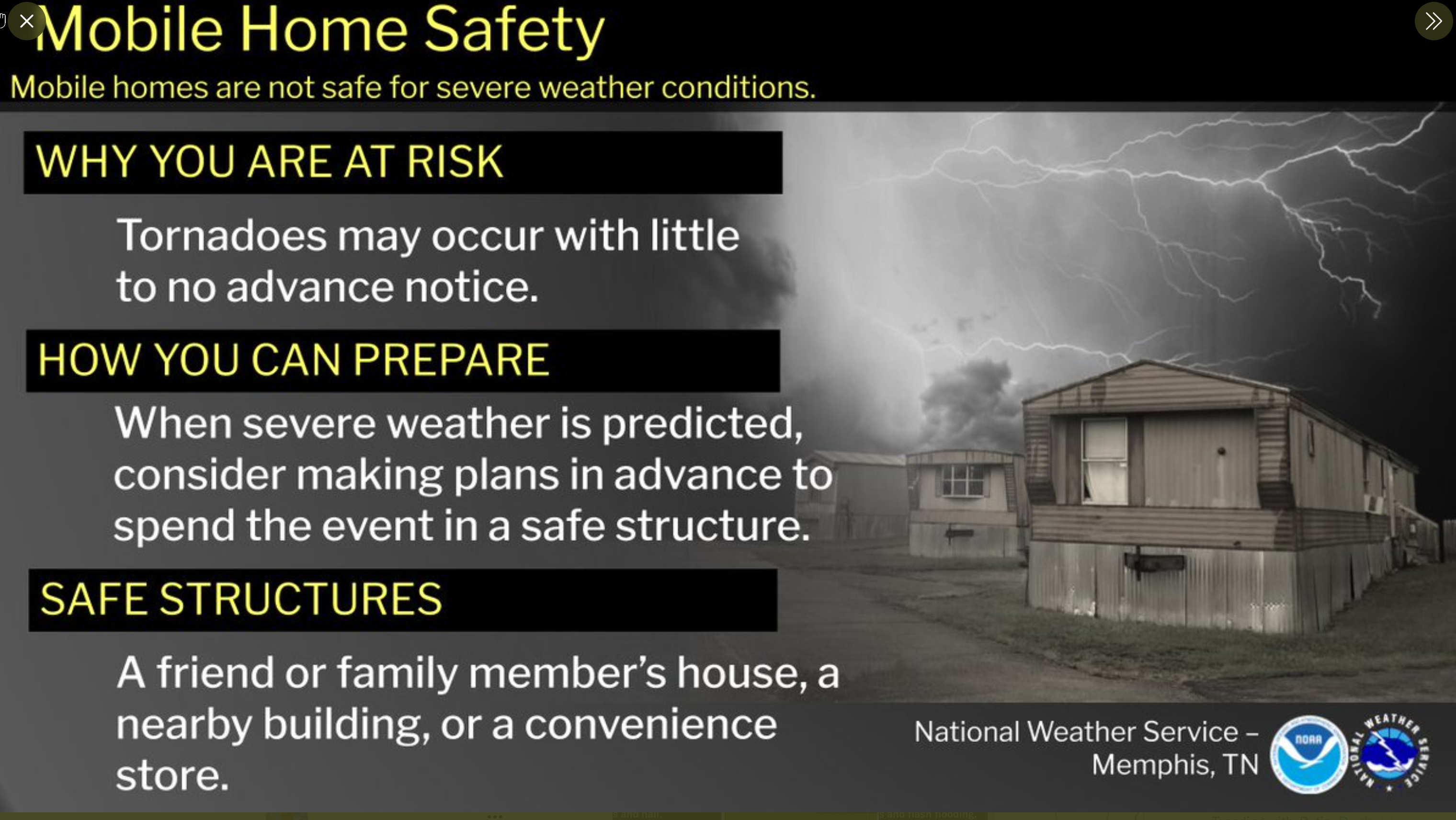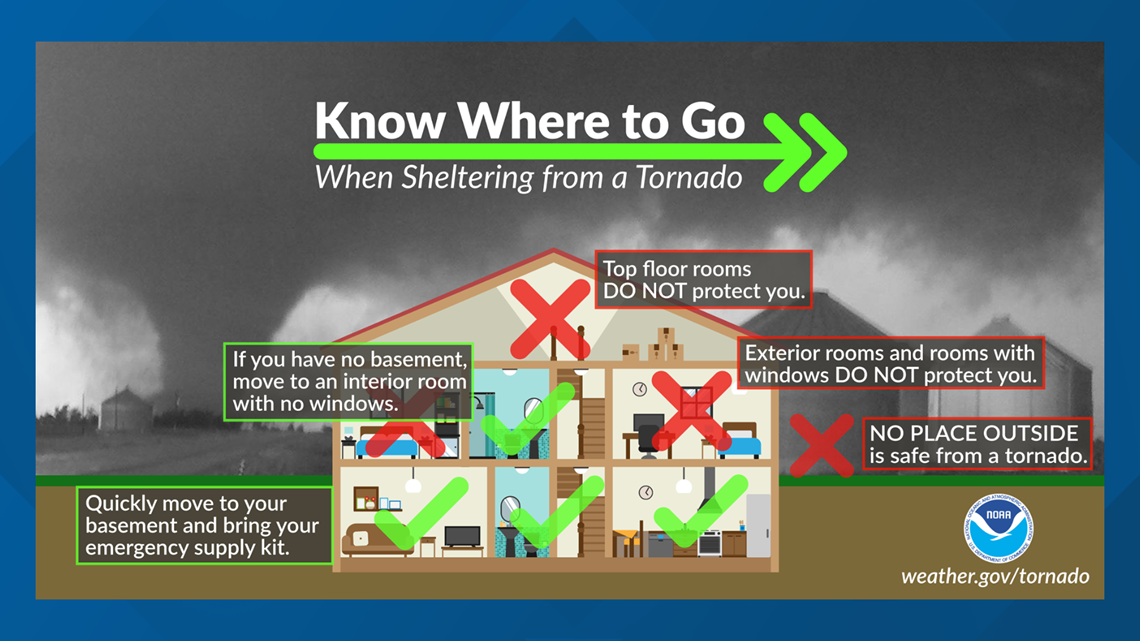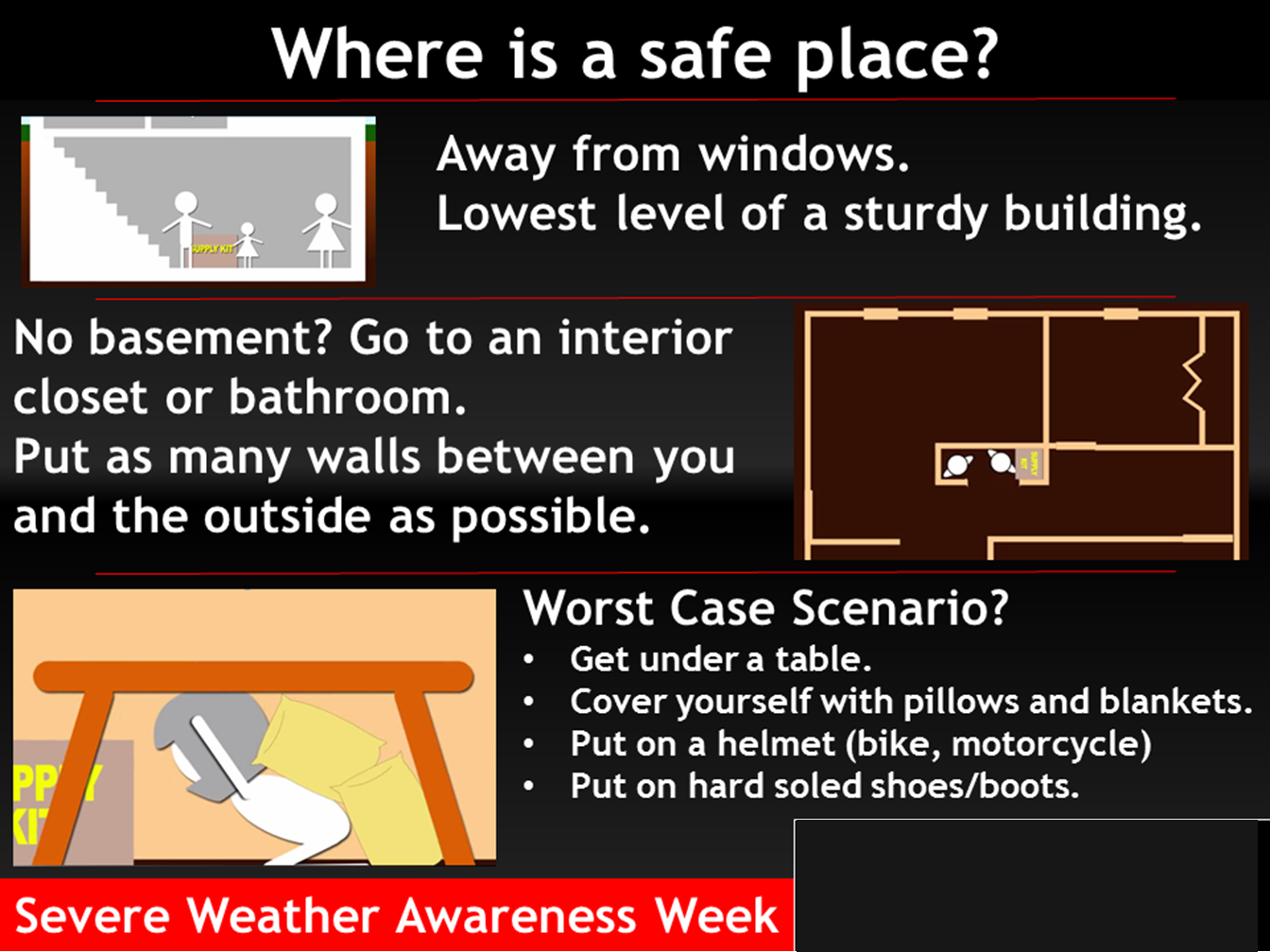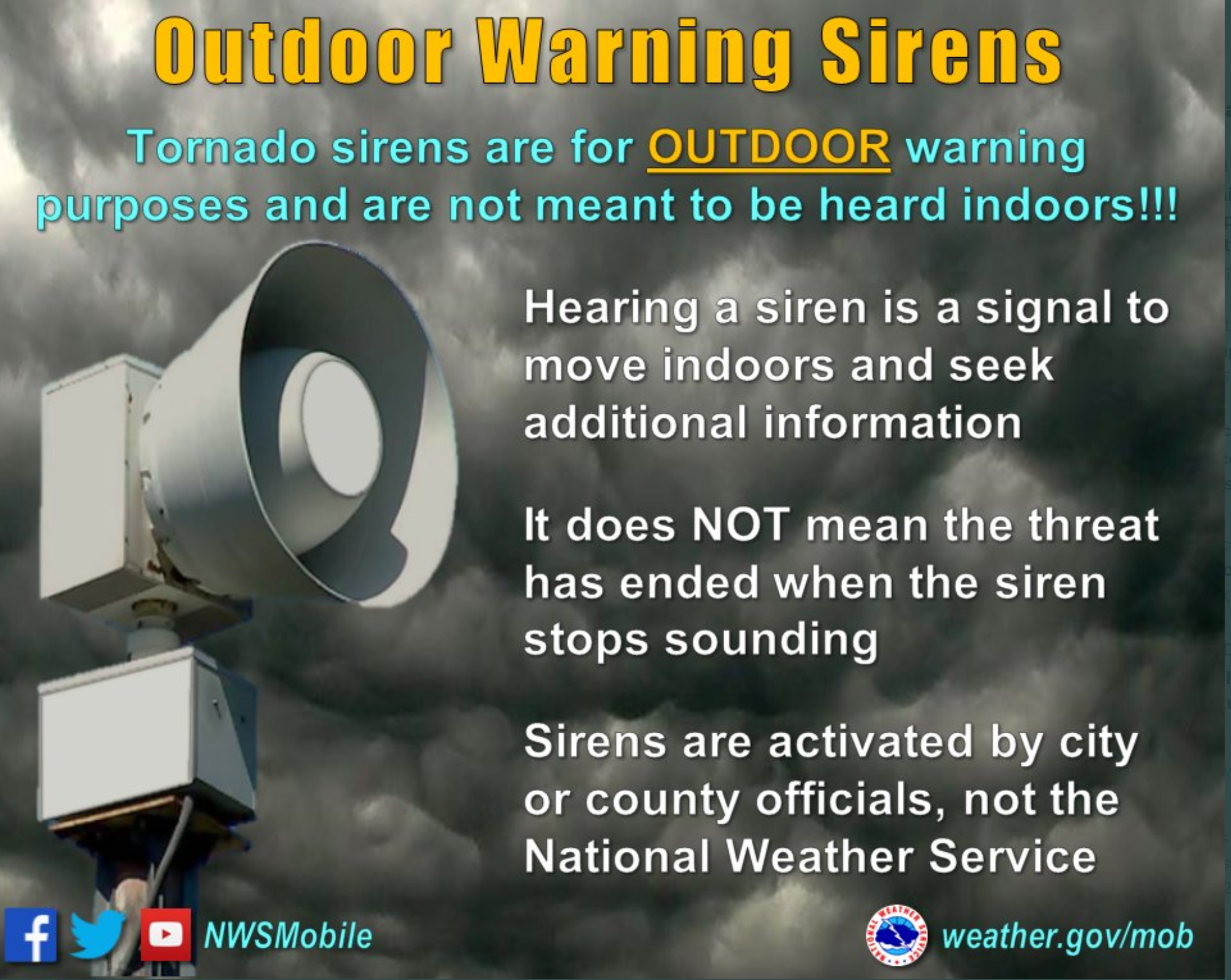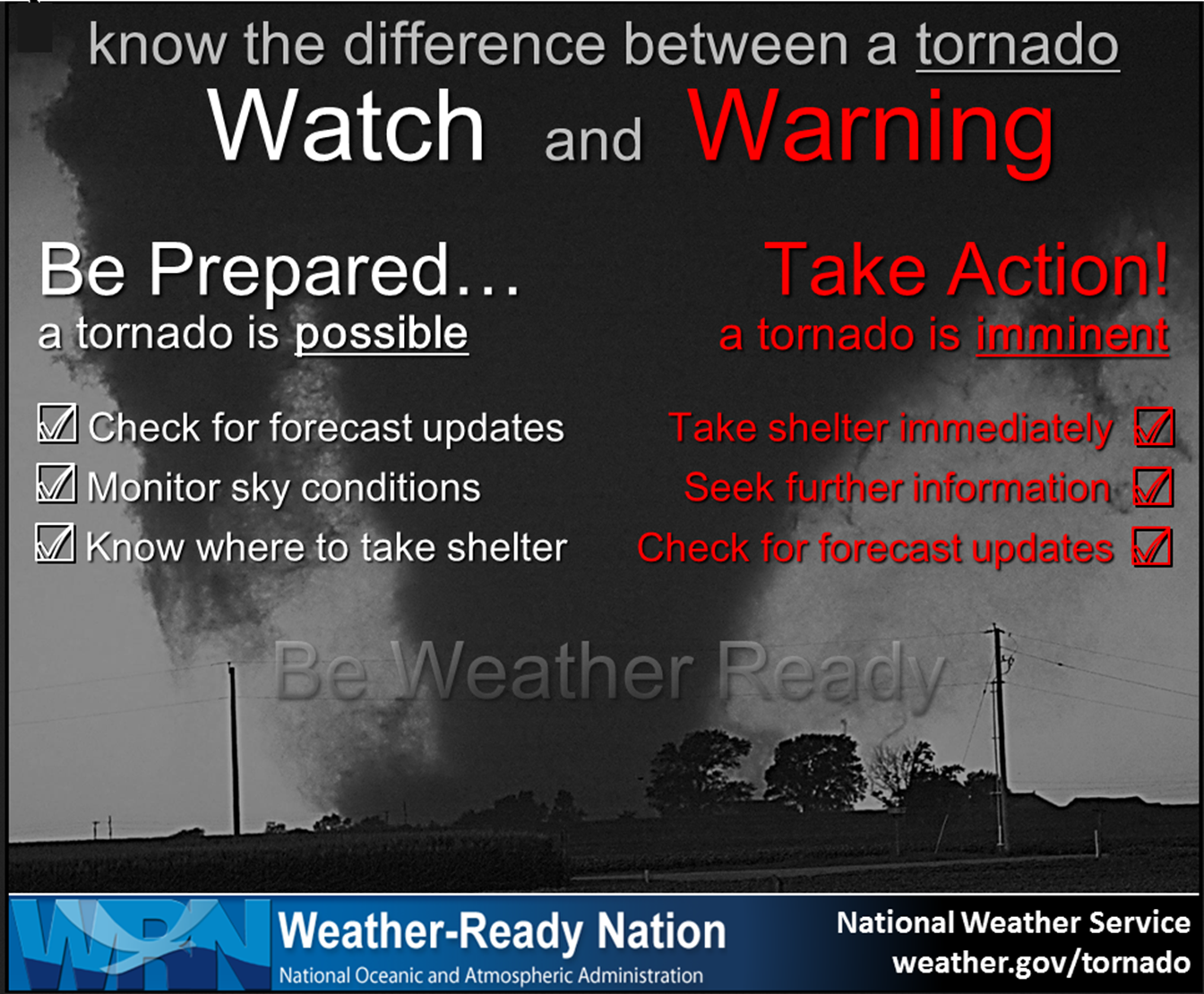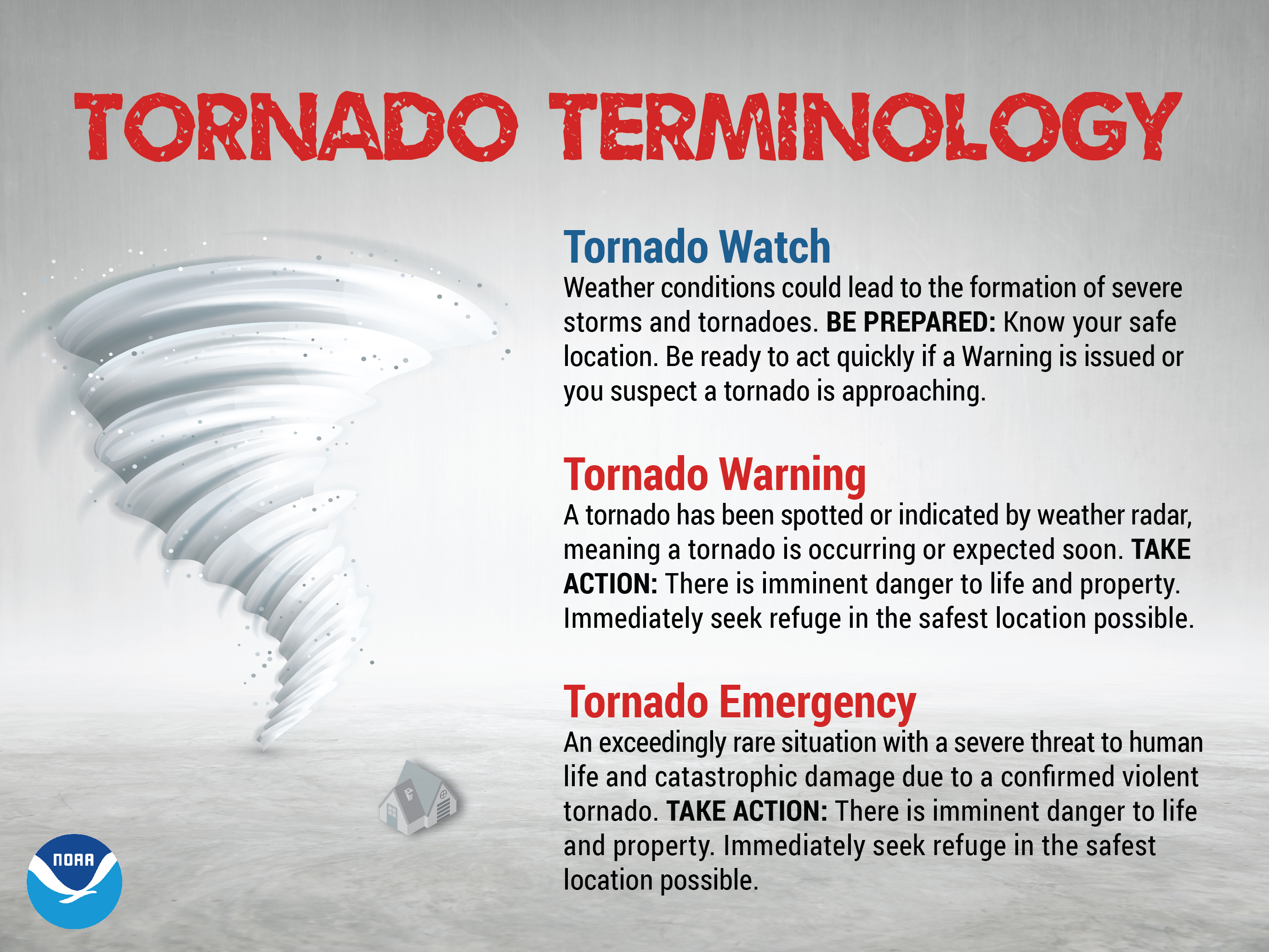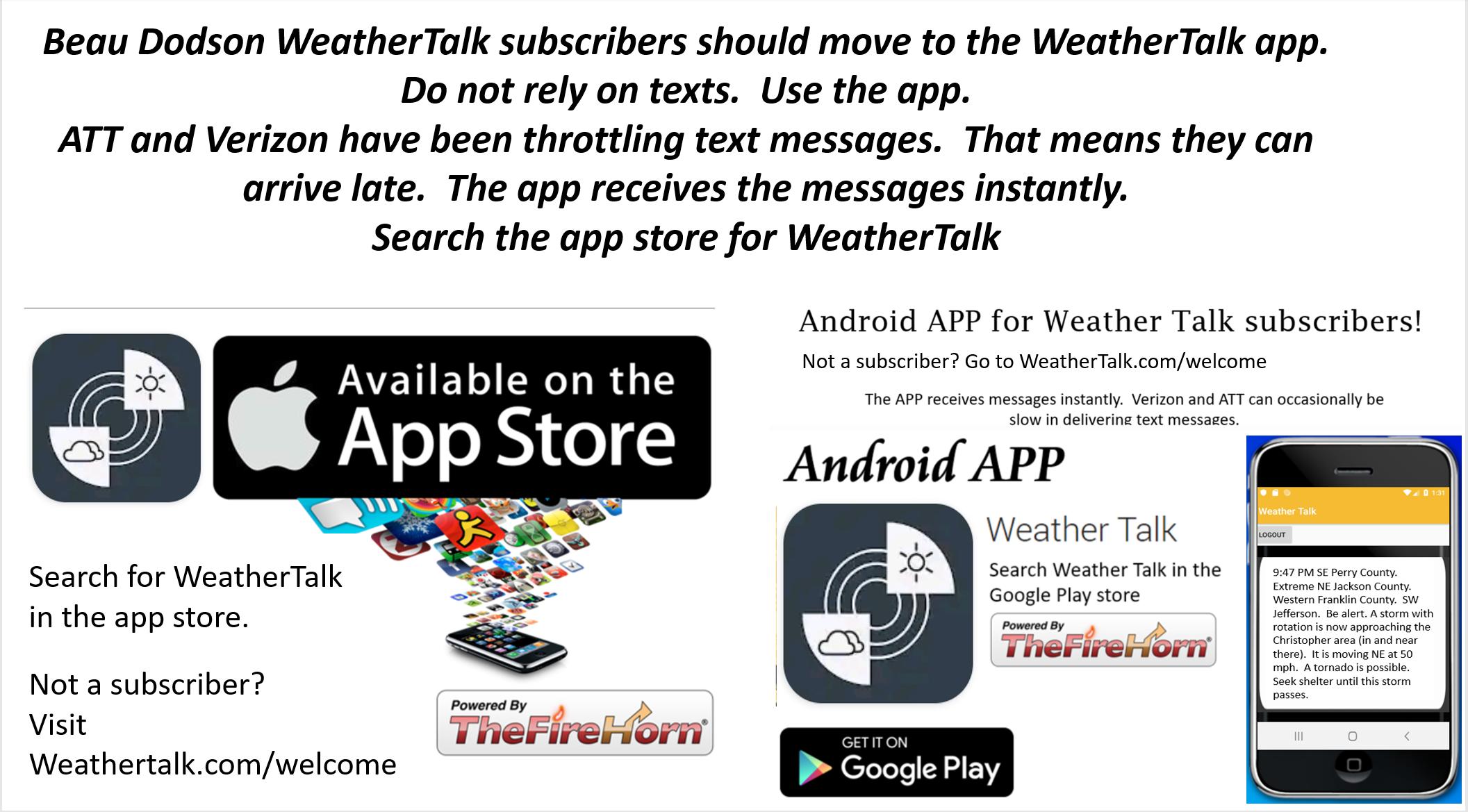.
SCROLL DOWN THE PAGE FOR UPDATES
.
Click on the words below to subscribe
Storm Tracking Links
Interactive local city-view radars. Clickable watches and warnings.
https://wtalk.co/B3XHASFZ
Backup radar site in case the above one is not working.
https://weathertalk.com/morani
Regional Radar
https://imagery.weathertalk.com/prx/RadarLoop.mp4
*NEW* Zoom interactive radar (with storm chaser streams)
https://wtalk.co/AVWG7GM7
Real time lightning tracker system two.
https://map.blitzortung.org/#5.02/37.95/-86.99
Lightning Data (zoom in and out of your local area)
https://wtalk.co/WJ3SN5UZ
The app is for www.weathertalk.com subscribers. Subscriber first and then download the app.
Apple users click here. Android users click here.
What you need to know
Key Points
- There is a conditional risk of severe weather Thursday and Thursday night.
- Conditional means that there are questions as to whether the atmosphere can recover from morning clouds and precipitation. If the atmosphere does not recover then the risk is much lower later in the day and night.
- A few storms could be severe Friday, as well. Wind and hail will be the primary concern Friday.
- Have your Beau Dodson Weather app on. Check it. Make sure you have not logged out of the app.
- Have THREE to FIVE ways of receiving your severe weather warnings.
- Remember, a watch means to monitor updates. A warning means to seek shelter. A warning is a higher threat and means to seek shelter immediately. Severe weather may occur in or near your location.
.

Here is Facebooks’ Severe Weather Q&A threads.
Link https://www.facebook.com/beaudodsonweather
.
The latest blog updates will be posted here at the top of Beau’s severe weather blog.
Friday, May 6, 2022
7:35 AM
The risk of severe weather today is fairly low. A couple of severe thunderstorms are possible. Mainly over Kentucky and Tennessee.
The primary concern will be strong wind gusts and hail.
The time-frame of concern will be 12 PM through 6 PM. Overall, this is a low risk.
.
May 5, 2022
1:40 PM
The risk of severe weather the rest of today and tonight is low.
Clouds and precipitation have kept instability levels low. Remember, we talked about this. If that were to happen then the severe risk is lower.
I will continue to monitor radars and data. For now, the overall risk is low.
Additional storms are likely late tonight into Friday. There is a chance some of those could be intense. Continue to monitor updates.
.
1:40 PM
Southeast Trigg, Christian, Todd, and Muhlenberg Counties.
Thunderstorms are moving northeastward out of western Tennessee. Some of these storms could produce strong and gusty winds, nickel size hail, frequent lightning, and heavy downpours.
There is a low-end risk of damaging wind and large hail.
Radar
https://weatherobservatory.com/radar_hoptown.htm
8 AM
Graphic from the Paducah, KY, NWS Office
Light green is where thunderstorms may occur but should be below severe levels.
Dark green is a level one risk. Yellow is a level two risk. Orange is a level three (enhanced) risk. Red is a level four (moderate) risk. Pink is a level five (high) risk.
Ignore the thick black lines.
One is the lowest risk. Five is the highest risk.
A severe storm is one that produces 58 mph wind or higher, quarter size hail, and/or a tornado.
.
7:30 AM Update
Thursday into Friday
The primary concern today and tonight will be showers and thunderstorms.
A few of the storms could become severe. The risk is highest across the Missouri Bootheel and then along the Kentucky/Tennessee border southward.
We are waking up to a band of widespread precipitation from Missouri southward to Arkansas.
7 AM radar
Satellite shows thinning clouds over eastern Arkansas, Tennessee, and Mississippi.
We will need to watch that.
All of this precipitation is raising questions about how unstable the atmosphere can become throughout today/this afternoon. This seems to be a big question in our region in almost every event over the past few months.
In order for the atmosphere to destabilize and produce severe thunderstorms you need several ingredients. Those include higher dew points, often times sunshine or breaks in the clouds, rising temperatures, and an atmosphere that has not been worked over by ongoing showers and thunderstorms.
When you see widespread precipitation, in an area expecting severe weather, then you have to wonder if the atmosphere can recharge or recover.
That is not a given today. We will have to see what happens with this morning activity. Does it weaken? Do the clouds break up?
If the atmosphere can recover, then severe thunderstorms will develop this afternoon and evening along a northward moving warm front. This warm front will divide warmer and moister air to the south and drier/cooler air to the north.
This will be the battle-ground zone where severe weather may develop.
Usually, the most intense thunderstorms form along and south of the warm front.
We need to pay attention this afternoon into the evening hours. It is possible that supercells form. If that happens then they could produce damaging wind, large hail, and even a tornado.
Supercells tend to be more scattered in nature. Compared to a line of thunderstorms (squall line).
Supercells can produce very strong wind gusts, large hail, and longer tracked tornadoes, as well.
Confidence in severe weather developing remains low. We just are going to have to see if the atmosphere can destabilize during the afternoon hours.
Monitor your Beau Dodson Weather app and the live severe weather blog.
Thunderstorms will likely continue into tonight and tomorrow morning.
A cold front will push across the region late tonight. That should bring another band of thunderstorms through the region. Some of those could produce gusty winds, frequent lightning, hail, and heavy rain.
Scattered showers and thunderstorms will continue Friday. With the front near the region, additional severe thunderstorms will be possible. The front has slowed.
The risk of severe weather will include 60 mph wind gusts and quarter size hail. At one point, it appeared severe weather would not be a concern Friday. The slowing front changed that.
The primary concern will be the eastern half of the region.
A few showers and thunderstorms will linger into Friday night, but decreasing overall.
Saturday will deliver some clouds and perhaps one or two showers on radar. The bulk of the region should be dry Saturday.
The Storm Prediction Center has outlined our region in a level one and two severe weather risk (for Thursday/Thursday night).
Keep in mind, the Storm Prediction Center could still shift these colors around.
The bottom line is not to focus on the SPC colors, but focus on the forecast. A few severe storms are possible Thursday/Thursday night.
Light green is where thunderstorms may occur but should be below severe levels.
Dark green is a level one risk. Yellow is a level two risk. Orange is a level three (enhanced) risk. Red is a level four (moderate) risk. Pink is a level five (high) risk.
Ignore the thick black lines.
One is the lowest risk. Five is the highest risk.
A severe storm is one that produces 58 mph wind or higher, quarter size hail, and/or a tornado.
Tomorrow’s severe weather outlook.


This animation is the HRW FV3 high resolution model.
This animation shows you what radar might look like as the next system pulls through the region. It is a future-cast radar.
Time-stamp upper left. Click the animation to enlarge it.
.
This animation is the Storm Prediction Center WRF model.
This animation shows you what radar might look like as the next system pulls through the region. It is a future-cast radar.
Time-stamp upper left. Click the animation to enlarge it.
Occasionally, these maps are in Zulu time. 12z=7 AM. 18z=1 PM. 00z=7 PM. 06z=1 AM
.
This animation is the Hrrr short-range model.
This animation shows you what radar might look like as the next system pulls through the region. It is a future-cast radar.
Time-stamp upper left. Click the animation to enlarge it.
Double click the animation to enlarge it.
Occasionally, these maps are in Zulu time. 12z=7 AM. 18z=1 PM. 00z=7 PM. 06z=1 AM
.
.This animation is the higher-resolution 3K NAM American Model.
Double click the animation to enlarge it.
Occasionally, these maps are in Zulu time. 12z=7 AM. 18z=1 PM. 00z=7 PM. 06z=1 AM
.
This next animation is the lower-resolution NAM American Model.
This animation shows you what radar might look like as the system pulls through the region. It is a future-cast radar.
Time-stamp upper left. Click the animation to enlarge it.
Occasionally, these maps are in Zulu time. 12z=7 AM. 18z=1 PM. 00z=7 PM. 06z=1 AM
.
May 4, 2022
1 PM Update
The morning data is mixed on how Thursday unfolds. That, of course, does not add a lot of confidence to the final outcome.
I think the SPC outlook for severe weather looks correct. A level one and two risk.
Scattered severe storms are possible during both the afternoon and overnight hours.
The afternoon storms will be along the warm front. The warm front will push northward through the region.
Then, during the overnight hours, a cold front will push across the region. That would be late at night. A line of storms will accompany the front.
The primary concern continues to be damaging wind and hail. A tornado is possible.
The NAM 3K model is quite bullish on several rounds of thunderstorms Thursday. Let me show you its future-cast radar.
7 AM
A few showers in the region. Perhaps a thunderstorm. Non-severe.
12 PM
Scattered showers and thunderstorms.
3 PM
Scattered thunderstorms. Some intense.
6 PM
Scattered thunderstorms continue.
8 PM
Scattered storms.
3 AM
The cold front has storms lined up along it.
.
The Storm Prediction Center has outlined our region in a level one and two severe weather risk (for Thursday/Thursday night).
Keep in mind, the Storm Prediction Center could still shift these colors around.
The bottom line is not to focus on the SPC colors, but focus on the forecast. A few severe storms are possible Thursday/Thursday night.
Light green is where thunderstorms may occur but should be below severe levels.
Dark green is a level one risk. Yellow is a level two risk. Orange is a level three (enhanced) risk. Red is a level four (moderate) risk. Pink is a level five (high) risk.
Ignore the thick black lines.
One is the lowest risk. Five is the highest risk.
A severe storm is one that produces 58 mph wind or higher, quarter size hail, and/or a tornado.
Tomorrow’s severe weather outlook.


8:15 AM Update
Thursday into Saturday
Bottom line:
Severe storms are possible Thursday and Thursday night. There remain questions about the extent of the potential.
Morning cloud cover and precipitation could keep instability levels lower. That would reduce the risk later in the day.
The arrival time of the front has slowed. That means instability levels will be lower when it arrives. That could keep the risk from becoming great.
There are questions about this event. Thus, the best advice is the monitor updates throughout the day Thursday into the overnight hours.
I will be sending out updates to the Beau Dodson Weather app. I will keep the severe weather blog updated.
Our next big cold front will push into the region Thursday and Thursday night.
Models continue to slow the fronts arrival time.
At one point, it appeared the front would push through the region Thursday afternoon and early evening. Over the past 24-hours, the front continues to trend slower.
It now appears the front won’t push across the region until late Thursday night into Friday. This is when instability levels will be lower. That is the good news.
Lower instability levels would mean lower severe weather threats.
With that said, we aren’t out of the woods with this system.
A warm front will push northward across the region Thursday and Thursday night. This warm front will separate warm and moist air to the south from somewhat cooler and drier air to the north.
Storms that form near the warm front could become severe with damaging wind, hail, and even a tornado. We always have to closely watch warm front storms. They can quickly become severe under the right conditions.
Let me show you some graphics
This is the NAM model. Keep in mind, there are many models. Not all models show the same parameters. Some show lower numbers. It is something that I will be monitoring as new data arrives today. I will be watching for trends in the guidance.
High dew points. A lot of moisture will pool near the warm front. Those are 70+ dew points across far southeast Missouri into Kentucky and Tennessee.
You can see the moist air pushing northward.
This morning’s dew points compared to tomorrow afternoon.
This morning
Compared to tomorrow afternoon (purple colors represent muggy air).
As the warm front moves northward, so does the warm/moist air.
Surface based CAPE will be high south of the warm front, as well.
CAPE is basically fuel that thunderstorms tap into. Look at the higher numbers near the warm front.
Surface based lift index numbers will be high near the warm front, as well. Quite a bit of unstable air.
The NAM future-cast radar shows a few supercells near the warm front.
Keep in mind, this is just one model. It is something we will need to monitor moving forward.
The second risk of severe weather will be along the cold front. That won’t be until late Thursday night. By that time, CAPE will be less. CAPE is fuel that storms tap into. With lower CAPE numbers comes a lower severe weather risk.
The bottom line is that we will have periods of showers and thunderstorms late Wednesday night into Friday.
A few of those storms could be severe Thursday/Thursday night.
The risk appears somewhat lower than it did 24 hours ago. Remember, it only takes on tornado or one severe thunderstorm to cause problems. Let’s monitor updates.
I will go ahead and start the severe weather blog. It will be updated throughout the event.
Showers and thunderstorms will still be with us Friday, but with decreasing activity as we move through the afternoon hours.
Isolated showers are possible Friday night and Saturday. I would not change my Saturday plans. Check radars, but overall it should be an okay day.
Rain will totals will continue to vary greatly. Thunderstorms can always double rain totals compared to neighboring areas.
Expect a widespread 0.5 to 1.0″ of rain between now and Friday night. Then, there will be some areas that will easily top an inch of rain. Same as recent events.
Here are some graphics the NWS has posted on their websites.
Keep in mind, the Storm Prediction Center could still shift these colors around.
The bottom line is not to focus on the SPC colors, but focus on the forecast. A few severe storms are possible Thursday/Thursday night.
The St Louis, NWS Office
The Paducah, NWS Office
.
The Storm Prediction Center has outlined our region in a level one and two severe weather risk (for Thursday/Thursday night).
Keep in mind, the Storm Prediction Center could still shift these colors around.
The bottom line is not to focus on the SPC colors, but focus on the forecast. A few severe storms are possible Thursday/Thursday night.
Light green is where thunderstorms may occur but should be below severe levels.
Dark green is a level one risk. Yellow is a level two risk. Orange is a level three (enhanced) risk. Red is a level four (moderate) risk. Pink is a level five (high) risk.
Ignore the thick black lines.
One is the lowest risk. Five is the highest risk.
A severe storm is one that produces 58 mph wind or higher, quarter size hail, and/or a tornado.
Tomorrow’s severe weather outlook.



Click here if you would like to return to the top of the page.
Again, as a reminder, these are models. They are never 100% accurate. Take the general idea from them.
What should I take from these?
- The general idea and not specifics. Models usually do well with the generalities.
- The time-stamp is located in the upper left corner.
.
What am I looking at?
You are looking at different models. Meteorologists use many different models to forecast the weather. All models are wrong. Some are more wrong than others. Meteorologists have to make a forecast based on the guidance/models.
I show you these so you can see what the different models are showing as far as precipitation. If most of the models agree, then the confidence in the final weather forecast increases.
You can see my final forecast at the top of the page.
Occasionally, these maps are in Zulu time. 12z=7 AM. 18z=1 PM. 00z=7 PM. 06z=1 AM
.
This animation is the HRW FV3 high resolution model.
This animation shows you what radar might look like as the next system pulls through the region. It is a future-cast radar.
Time-stamp upper left. Click the animation to enlarge it.
.
This animation is the Storm Prediction Center WRF model.
This animation shows you what radar might look like as the next system pulls through the region. It is a future-cast radar.
Time-stamp upper left. Click the animation to enlarge it.
Occasionally, these maps are in Zulu time. 12z=7 AM. 18z=1 PM. 00z=7 PM. 06z=1 AM
.
This animation is the Hrrr short-range model.
This animation shows you what radar might look like as the next system pulls through the region. It is a future-cast radar.
Time-stamp upper left. Click the animation to enlarge it.
Double click the animation to enlarge it.
Occasionally, these maps are in Zulu time. 12z=7 AM. 18z=1 PM. 00z=7 PM. 06z=1 AM
.
.This animation is the higher-resolution 3K NAM American Model.
Double click the animation to enlarge it.
Occasionally, these maps are in Zulu time. 12z=7 AM. 18z=1 PM. 00z=7 PM. 06z=1 AM
.
Charge your devices in case of power outages.
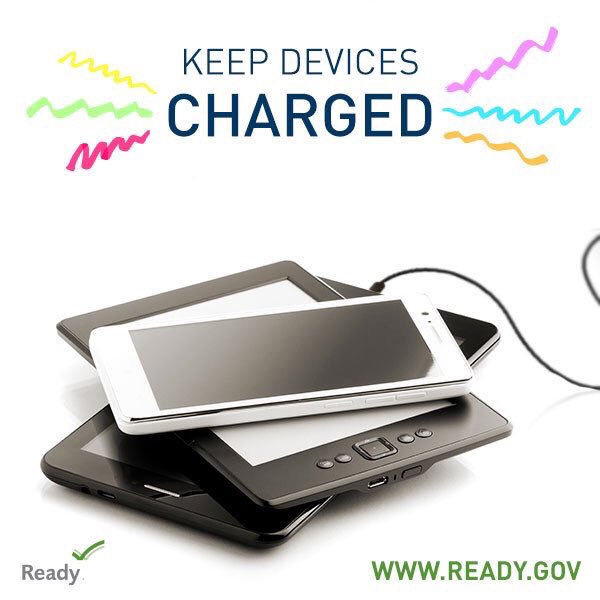
What you can do to prepare for severe weather
Here is some safety advice from the NWS concerning sheltering from storms. https://www.weather.gov/ama/severesafetytips
1. Have a family safety plan. Discuss it with your family. Make sure your kids know what to do in the event of severe weather.
2. Have your devices fully charged.
3. Change the batteries in your NOAA weather radio.
4. Have THREE TO FIVE ways of receiving your severe weather information. All sources can and have failed in the past. The Beau Dodson Weather app is one of those ways, NOAA weather radio, WEA on your phones (google it), local television and radar media, additional weather apps, and outdoor sirens. Do not rely on just the outdoor warning sirens.
5. Leave your shoes and wallet/keys by the bed. If a warning is issued overnight then you will be prepared.
6. We recommend people wear helmets during tornado warnings. In the event of an actual tornado then you will be thankful to have a helmet.
7. Have a thick blanket in your tornado safe-space.
8. Prescription medicine.
Create an emergency supply kit. If the storm is likely to cause a lot of damage, it’s important to be prepared for a variety of problems. Things that you should put in a basic supply kit include:
- Flashlights and extra batteries.
- Emergency radio.
- First aid kit
- Whistle, to alert people to your location.
- Personal sanitation products, such as garbage bags, toilet paper, paper towels, wet wipes, and tampons/pads.
- Plastic tarps
- Extra warm clothes.
- Dusk masks.
- Utility shut off tools.
Know your safety plan. Make sure your kids know the severe weather safety plan.
Have helmets in your safe space. Any kind of helmet is better than no helmet.
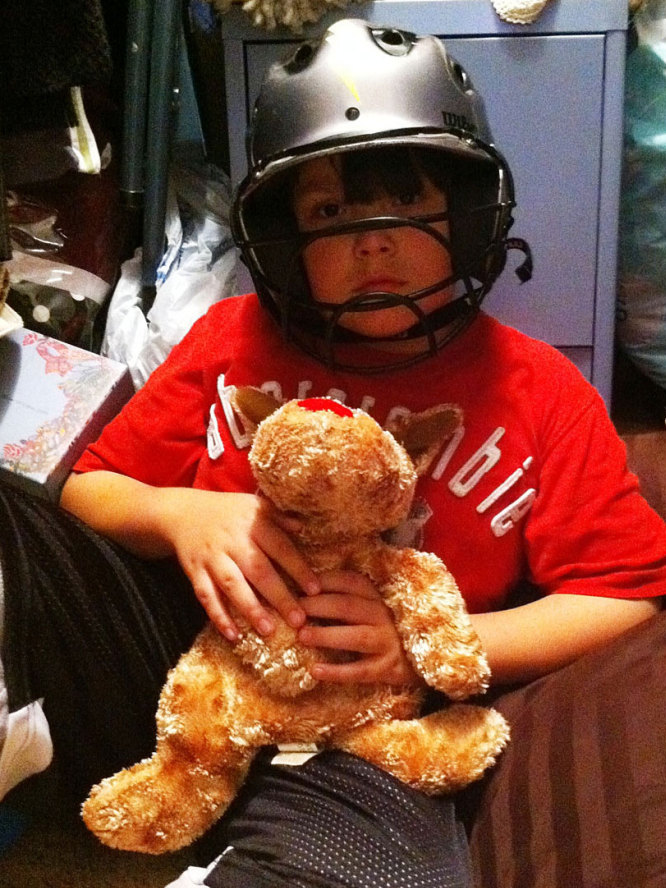
Noah Stewart shelters in the closet just 15 minutes before an April 2011 tornado demolished his house. Wearing the helmet may have saved his life, one doctor says.
Now is the time to prepare for severe weather.
Have three to five ways of receiving your severe weather information.
Know your families safety plan in the event severe weather develops.
Have multiple ways of receiving severe weather information. Not just my weather app. Have other ways, as well. All technology can fail. Thus, having more than one source will help keep you safe.
Remember, a WATCH means to monitor updates. You don’t have to change your behavior for a watch. Be prepared.
A WARNING is more serious. A WARNING means severe weather is imminent in or near your location. A WARNING means to seek shelter.
.
Where is a safe place to hide when tornadoes threaten your location.
![]()
Today’s severe weather outlook from the Storm Prediction Center (below).
Light green is where thunderstorms may occur but should be below severe levels.
Dark green is a level one risk. Yellow is a level two risk. Orange is a level three (enhanced) risk. Red is a level four (moderate) risk. Pink is a level five (high) risk.
One is the lowest risk. Five is the highest risk.
A severe storm is one that produces 58 mph wind or higher, quarter size hail, and/or a tornado.
The tan states are simply a region that SPC outlined on this particular map. Just ignore that.

The black outline is our local area.

.
Tomorrow’s severe weather outlook.

.
SUBSCRIBERS: Download the WeatherTalk app to keep abreast of my latest information.
The app is for subscribers. Subscribe at www.weathertalk.com/welcome then go to your app store and search for WeatherTalk
Subscribers, PLEASE USE THE APP. ATT and Verizon are not reliable during severe weather. They are delaying text messages.
The app is under WeatherTalk in the app store.
Apple users click here
Android users click here
![]()
![]()
.

Radar Link: Interactive local city-view radars & regional radars.
You will find clickable warning and advisory buttons on the local city-view radars.
If the radar is not updating then try another one. If a radar does not appear to be refreshing then hit Ctrl F5. You may also try restarting your browser.
Not working? Email me at beaudodson@usawx.com
Backup radar site in case the above one is not working.
https://weathertalk.com/morani
New ZOOM radar (with storm chasers)
https://wtalk.co/AVWG7GM7
Regional Radar
https://imagery.weathertalk.com/prx/RadarLoop.mp4
Lightning Data (zoom in and out of your local area)
https://wtalk.co/WJ3SN5UZ
Satellite Data
Computers and tablets. These two satellite links may not work well on cell phones.
Visible Satellite. This one is to be used during daylight only. Be sure and hit refresh once you are on the satellite page. Otherwise, the data will be old.
https://col.st/a5A0e
IR Satellite. This one shows cloud temperatures. Bright colors represent cold cloud tops. That could mean thunderstorms. Be sure and hit refresh once you are on the satellite page. Otherwise, the data will be old.
https://col.st/R2fw1
Water Vapor Satellite. This one shows mid-level moisture in the atmosphere. Be sure and hit refresh once you are on the satellite page. Otherwise, the data will be old.
https://col.st/xFVwx
.

Live lightning data: Click here.
Not receiving app/text messages?
Log in and out of your app.
USE THE APP. ATT and Verizon are slowing or stopping the text messages. Move to the app (not texts).
Make sure you have the correct app/text options turned on. Find those under the personal notification settings tab at www.weathertalk.com. Red is off. Green is on.
Subscribers, PLEASE USE THE APP. ATT and Verizon are not reliable during severe weather. They are delaying text messages.
The app is under WeatherTalk in the app store.
Apple users click here
Android users click here
.



